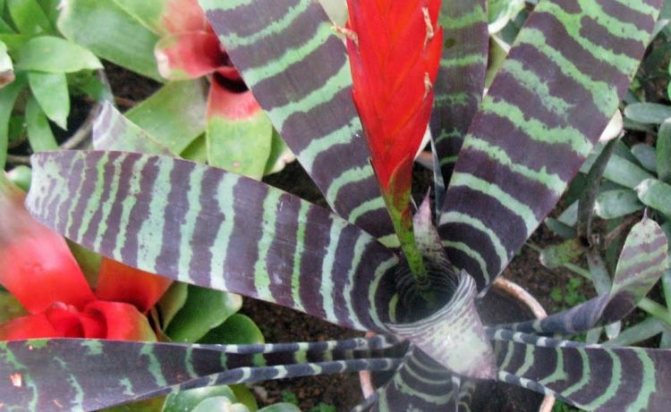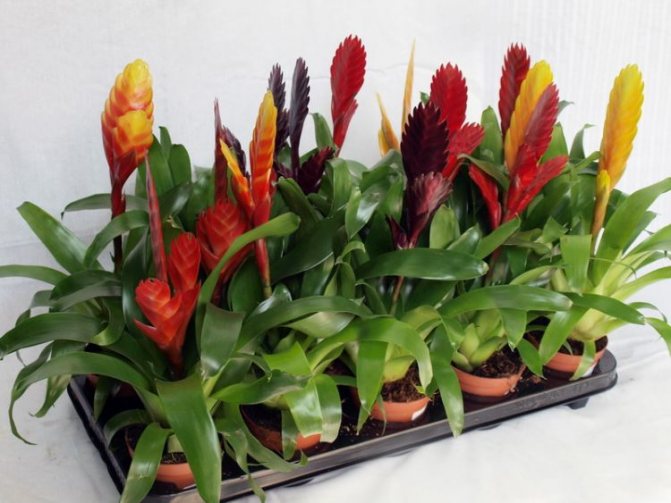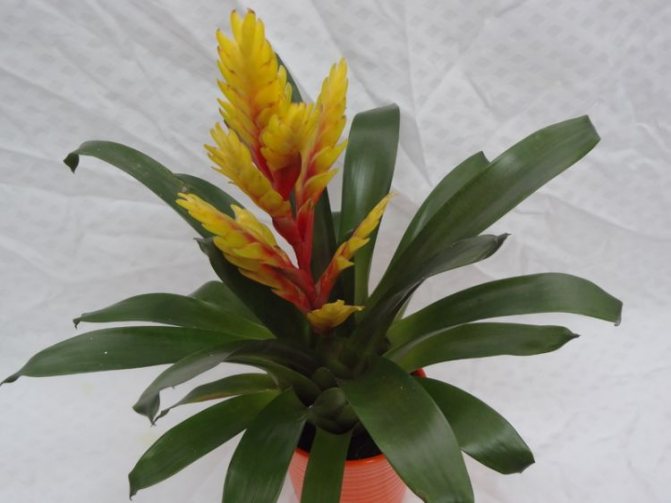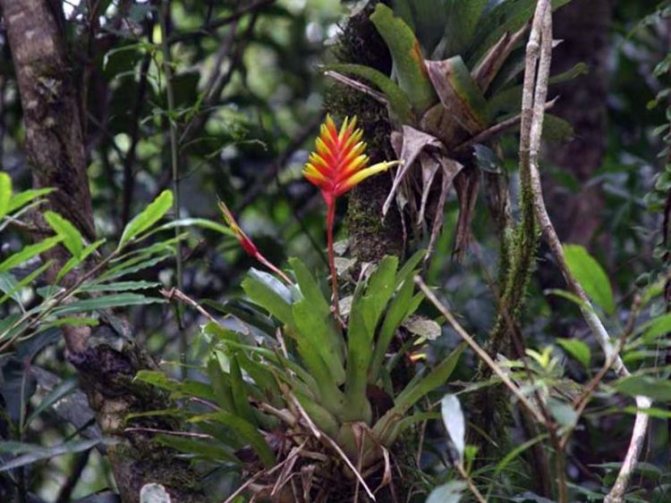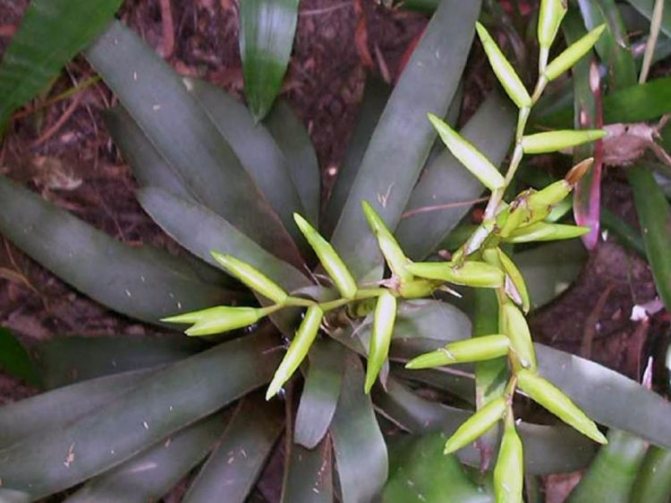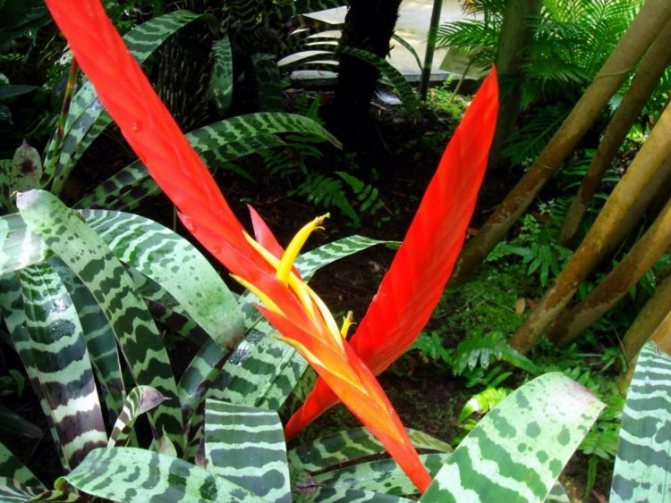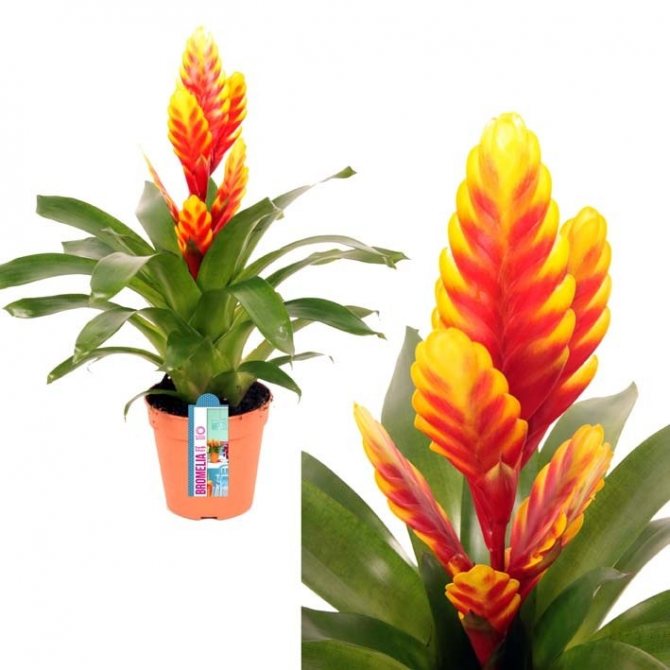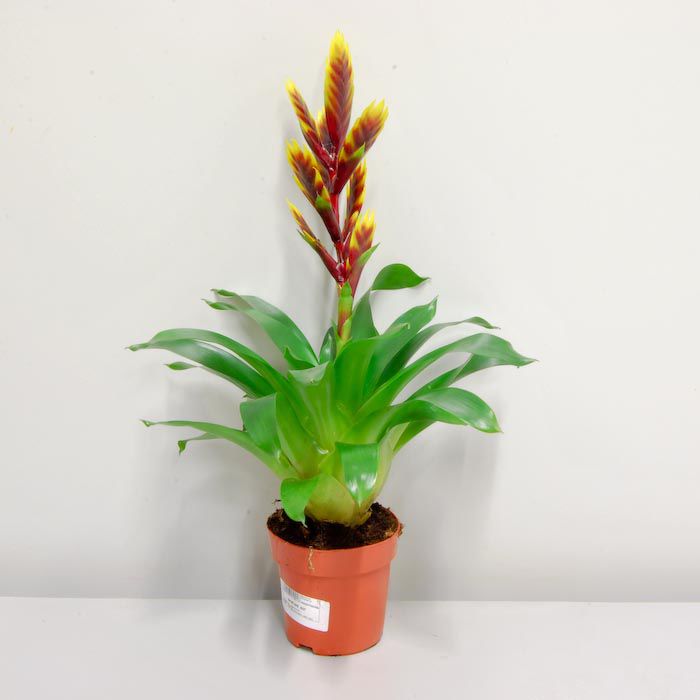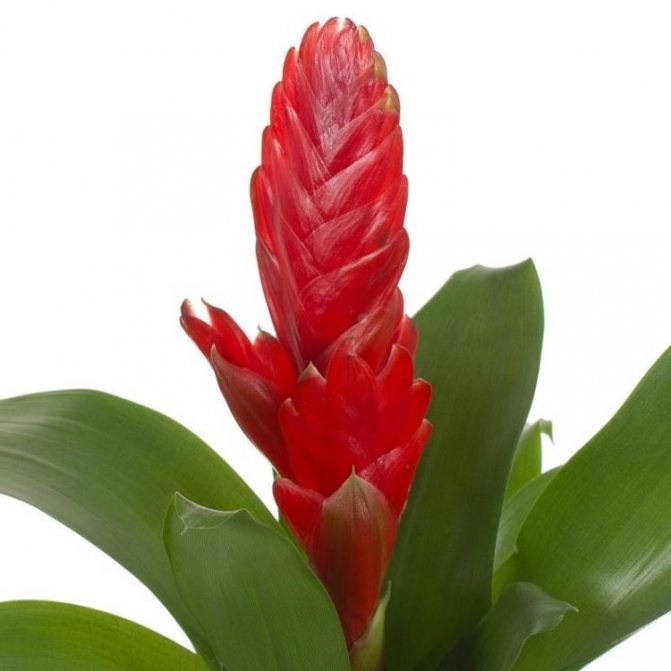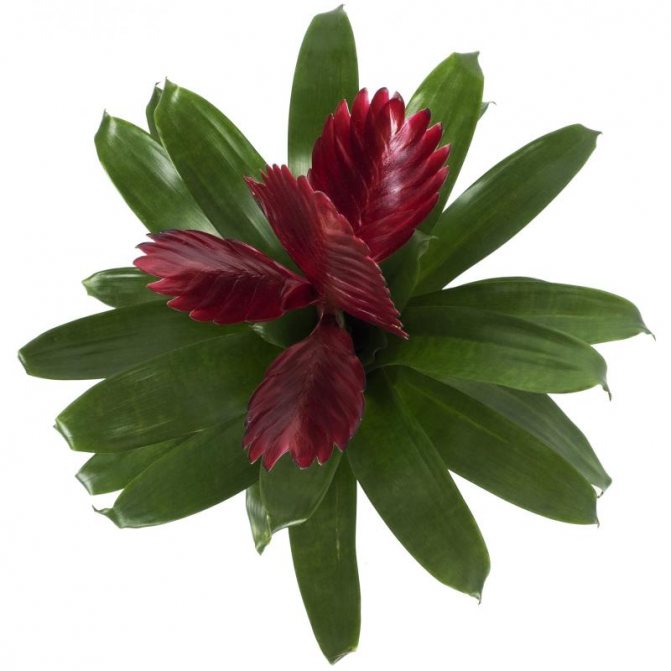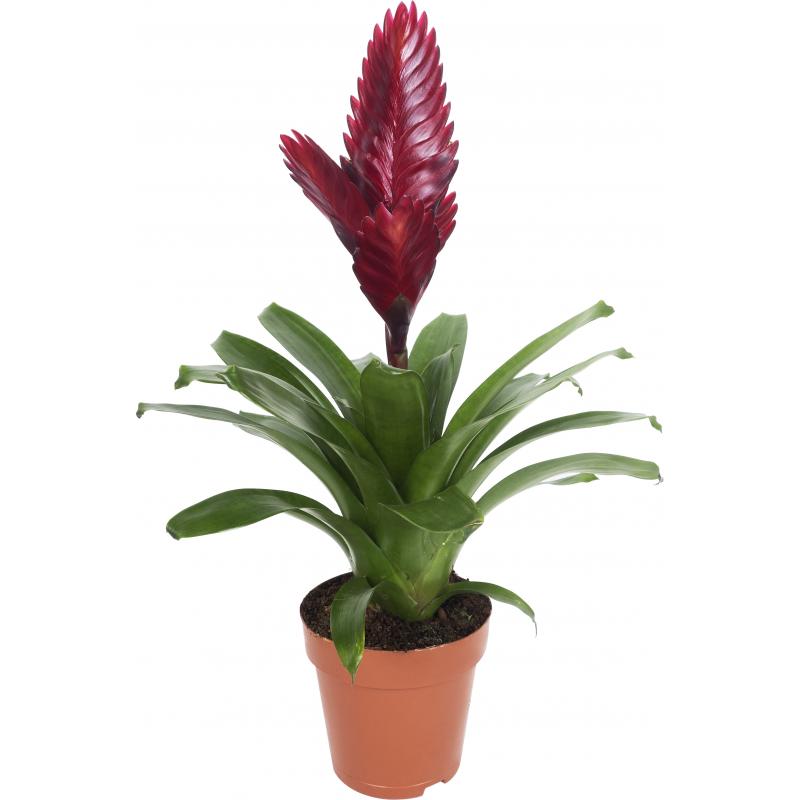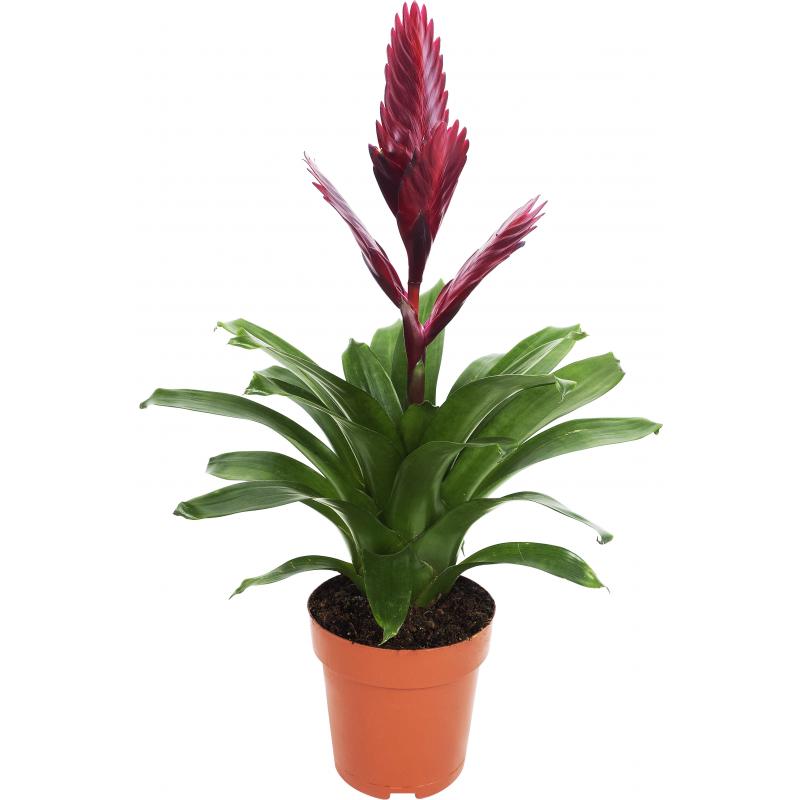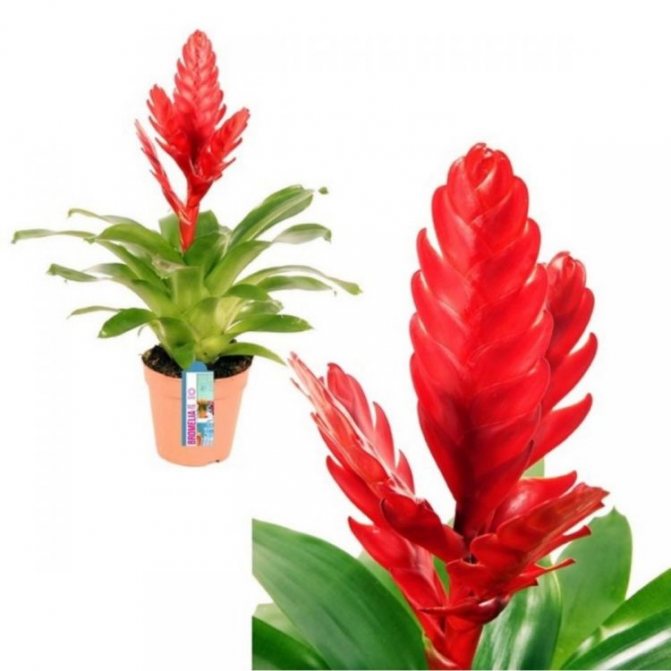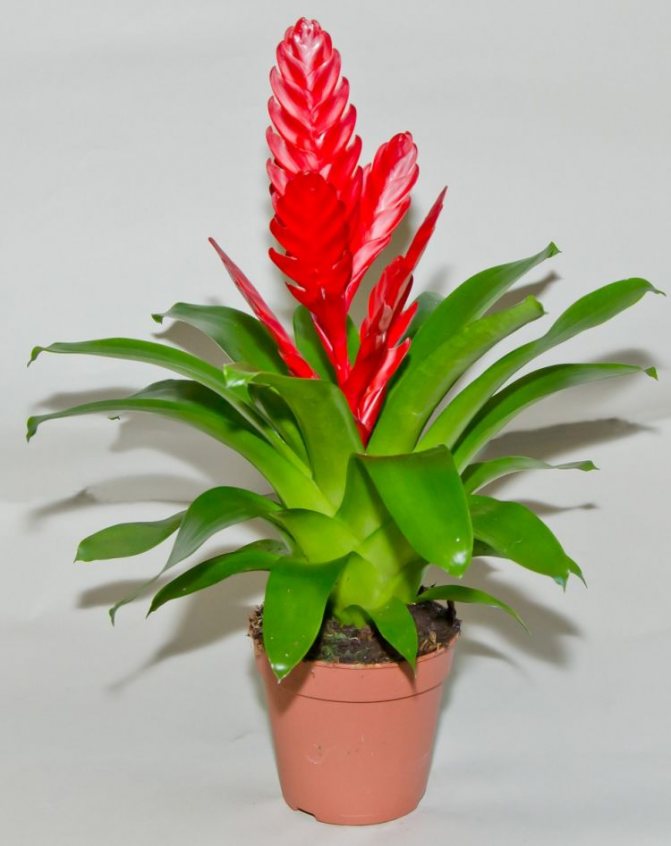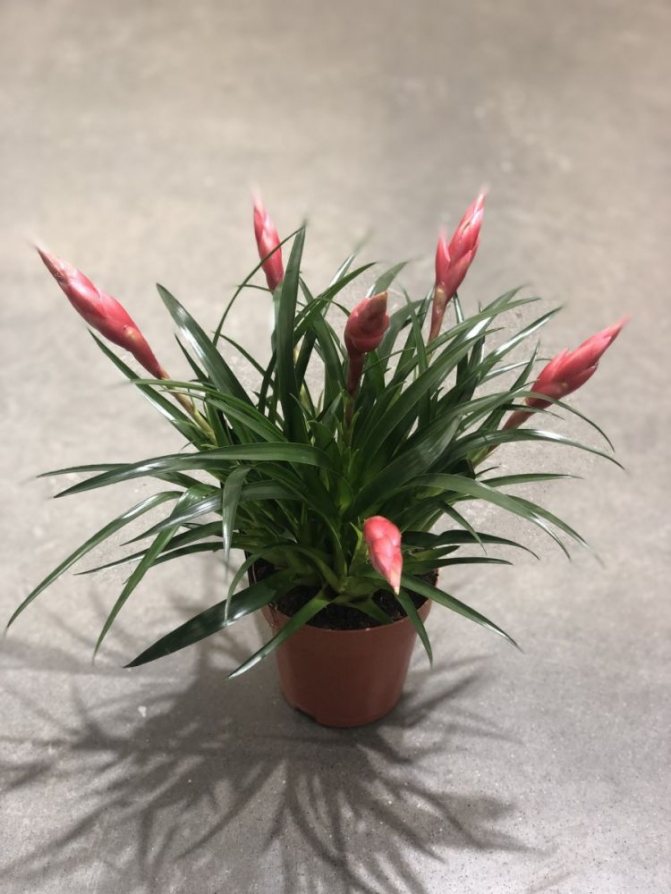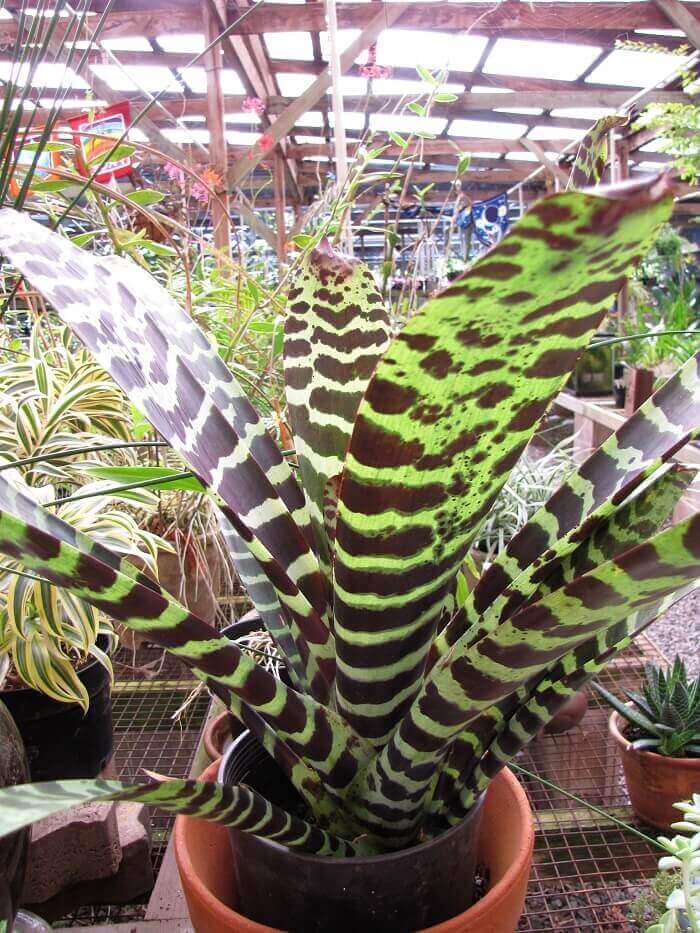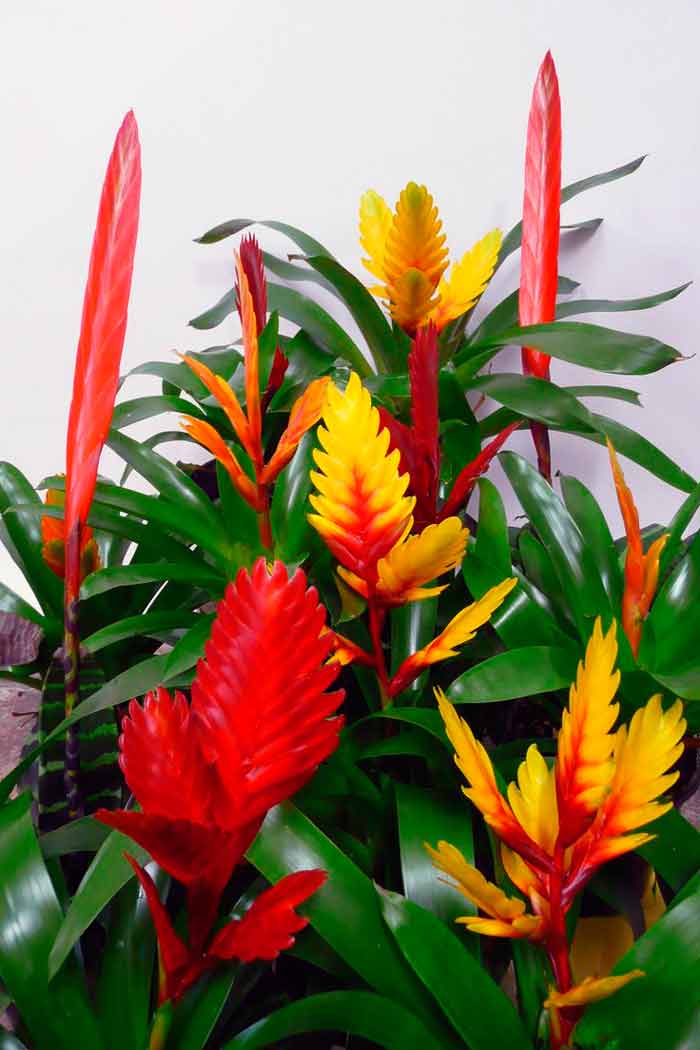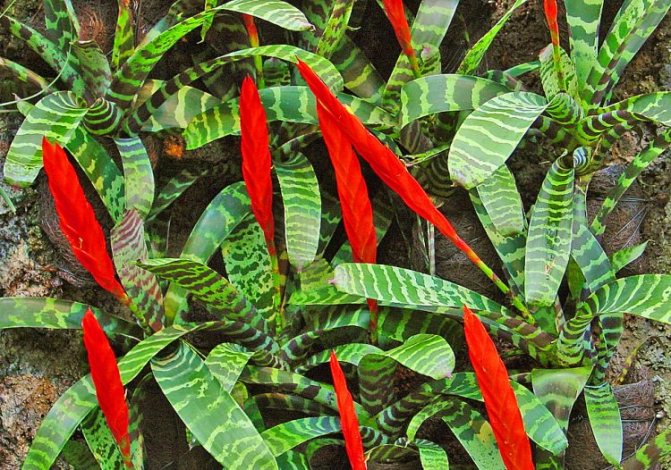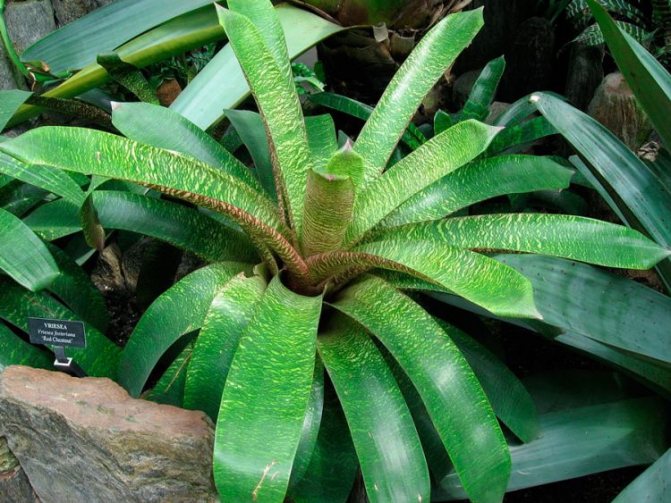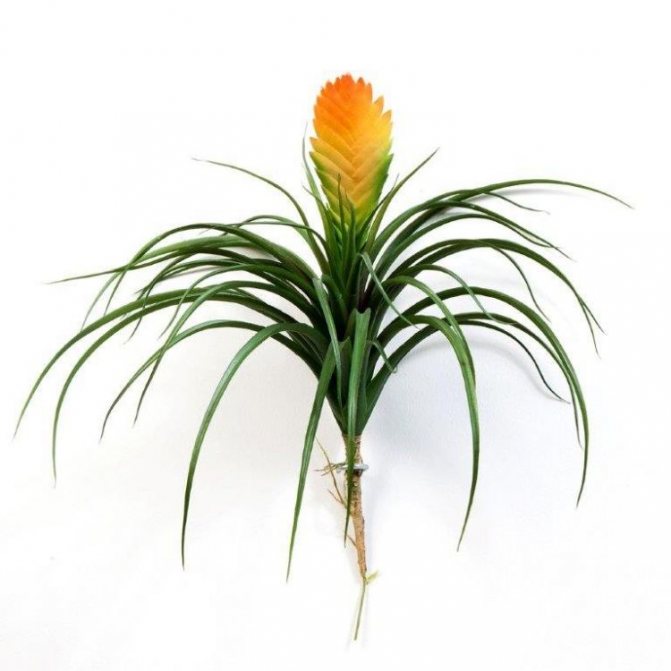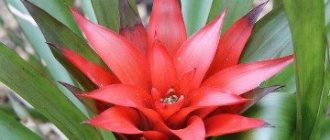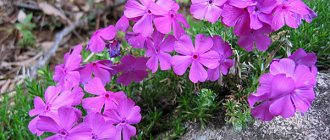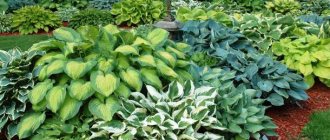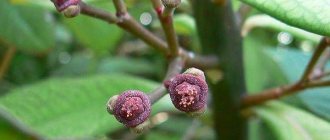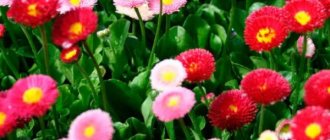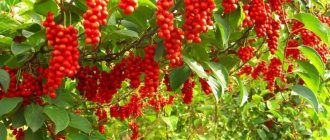Some species of Vriese are grown for their beautiful leaves, others for their unique inflorescences. This is one of the most common species of the Bromeliad family, which does not require serious home care.
In its natural habitat, Vriezia grows on rocky cliffs, snags and plants. The main habitat is the tropical forests of South America. Able to adapt to high mountain conditions.
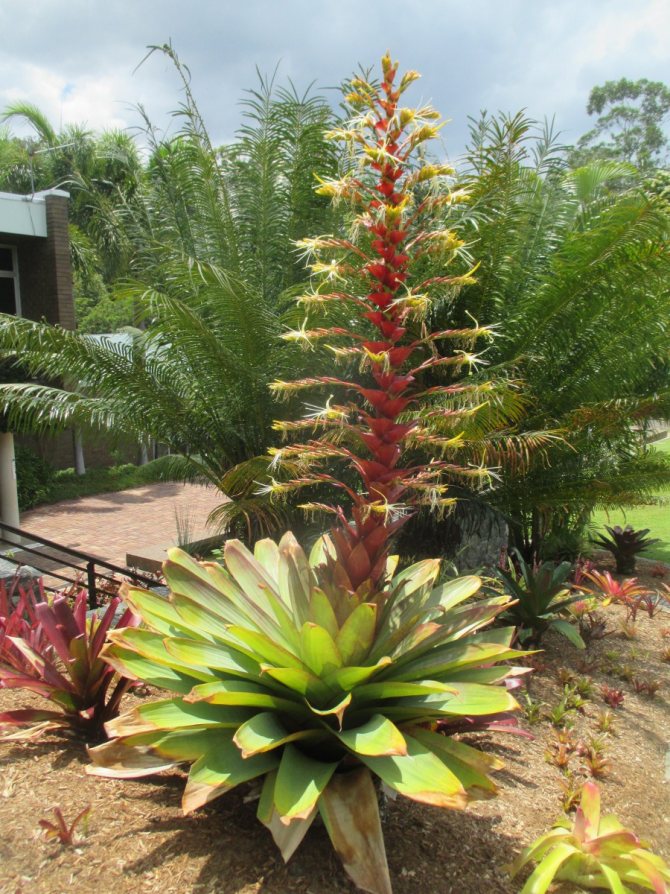
Perennial herbaceous plants belong to epiphytes, that is, they grow by attaching themselves to other objects and plants. They do not lead a parasitic lifestyle, but independently synthesize nutrients. The root system of the flower is poorly developed.
Leaves are leathery, curved, collected in a large rosette, can reach up to 80 cm long and up to 8 cm wide. The plant uses the rosette to obtain nutrients, accumulating up to 4 liters of water in it. The color of the leaves is also varied: there are varieties with light stripes, dark spots or covered with villi.
The vriezia flower has gained popularity among indoor plant lovers due to its long flowering and rare inflorescence shape, with the popular name "flaming" or "shiny sword". In height, the peduncle reaches 1 m. In shape, the inflorescence is spike-shaped, multi-flowered, in color as monochromatic (yellow, reddish, orange), and interspersed with other shades. The bracts are tough, retain their decorative appearance for a long time (up to 5-6 months), but the flowers themselves fade within a few days. After flowering, the fruit is formed - a box, inside which are seeds with tuft-shaped processes.
Moist air and regular watering without stagnant water is a basic requirement for good plant development.
Description of vriezia
There are about 250 species of both epiphytic and terrestrial plants. About 100 species are used for home keeping. This exotic flower is known in the circles of exotic connoisseurs for some sensitivity and fastidiousness. It is considered the most thermophilic of all bromeliads, and before purchasing it, consider if you can provide it with the right conditions. Caring for vriezia will create a little more trouble than the rest of the inhabitants of your window, you just have to carefully read its features.
So simple!
The care itself does not present any difficulties, it is enough only for the apartment to be warm all year round.
- Vriezia is a reservoir epiphyte with xiphoid leaves about 20 cm long, collected in a dense cup-shaped rosette, the center of which must be filled with clean water.
- The volume of the funnel in natural conditions can reach 5 liters.
- A peduncle grows from the center, bearing an inflorescence-spike with bright orange, densely packed bracts, between which small yellow flowers appear, similar to the claws of cancer.
Smooth, hard, dark malachite leaves are decorated with brown transverse stripes, similar to a sailor's vest. The ends of the leaf plates are bent down. Many species are grown precisely because of the beautiful monumental leaves, but some form interesting inflorescences, for example, in the form of a candelabrum, striking in their singularity and brightness.
Interesting Facts
- Vriezia does not have traditional roots, instead it has special retaining sprouts that do not take in nutrients, but only serve to create support for the plant by attaching to something.
- During tropical rainstorms, soft rainwater, with a variety of debris washed off the branches, collects in the center of the bowl and is gradually used by the plant for food and drink. Therefore, all the necessary substances enter only through the center of the outlet, since in natural conditions it lives on rocks, clinging to them.
- Like most bromeliads, the mother plant dies after flowering ends, forming 2-3 small shoots, from which new specimens will later be obtained.
Do not rush to cut the drying out outlet until it dries up completely. You can simply trim off the wilted ends gradually. The shoots leaving the mother plant bloom no earlier than after 2-2.5 years.
How to choose a vriezia when buying?
It is best to acquire vriezia when the inflorescence is barely outlined, but has not yet colored, since a plant with an already blossoming bud will not live long, and you may not get children from such a specimen. They begin to form a little earlier - before the bud appears.
Suitable soil for Vriezia
Ordinary Vriezian soil will not be to your taste, so it is better to prepare a special soil for a guest from the tropics.
It is more practical to purchase bromeliad soil from a flower shop, but if you have the opportunity, you can prepare the soil yourself. There are several ways to prepare soil.
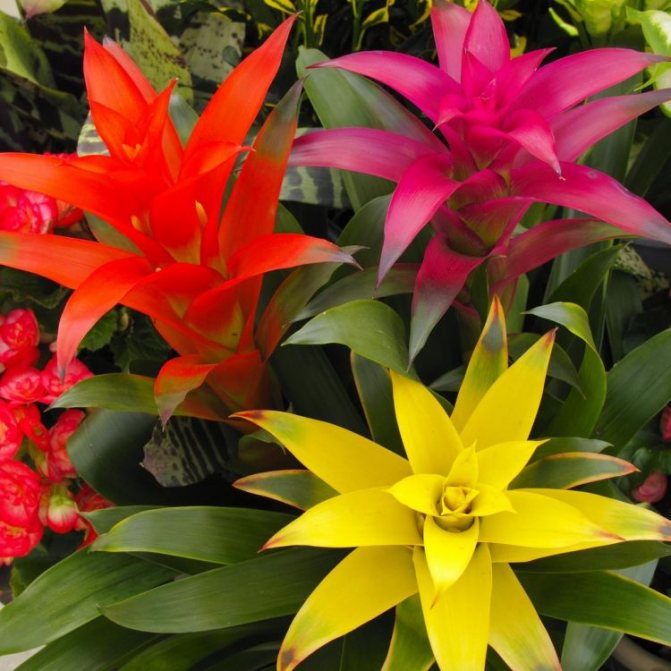

For the first, you need to mix a little holding, peat, sand and ordinary earth. You can also mix orchid primer with all-purpose primer. Any of the above methods are good.
How to care for a vriezia flower at home


Vriesia Astrid Vriesia hybrid ‘Astrid’ photo Home care
Vriezia loves light: in good light, leaves and inflorescences are painted in rich colors. However, it should be protected from direct sunlight - this is why the leaves of Vriezia become faded. The preferred orientation of the windows is west or east with direct sunlight for several hours. In summer, during the heat of the day, it is better to place the plant in the shade - this mode contributes to the appearance of buds.
Vriezia is one of the most thermophilic bromeliads; it does not tolerate sharp fluctuations in temperature, drafts, and cold. The optimum temperature in winter is 18-21 degrees, in summer Vriezia feels comfortable at room temperature. Vriezia needs regular watering throughout the year with soft, settled water.
How to water Vriezia?
- The center of the rosette should always be filled with liquid, except during the bud growth period - otherwise rot will appear.
- Vriezia roots are very sensitive to chlorine and fluorine in tap water, so the water is defended before watering for at least a day.
- In winter (when it is cold), the water from the leaf outlet is drained if the temperature in the room has dropped below 20 degrees. Only fill the funnel for a few hours a couple of times a week during the colder months of the year.
The presence of water at low temperatures can lead to the development of fungal diseases. If your house is warm enough in winter, then just move the pot of vriezia away from the central heating batteries. When a bud appears, water is also poured from the outlet. It will be enough just to spray the leaves and moisten the substrate.
How to feed Vriezia
During the period of active growth, they are fed with fertilizer for indoor flowers once every two weeks.
- If there is no special fertilizer for bromeliads, you can feed it with an ordinary universal one, reducing the dose by 2 times.
- Fertilizers are applied only foliarly, adding liquid to the funnel or spraying the leaves. It makes no sense to pour fertilizer under the root.
- Vriezia loves humid air, but spraying can lead to whitish streaks on the leaves. Therefore, a pot with vriezia is placed on wet expanded clay or in a pots with wet moss.
- You can periodically bathe the flower by pouring it from a watering can or under the shower.
Vriezia loves a humid microclimate created by other plants located around. Feels good, looks great in a composition with any indoor cultures. Prefers light, breathable peat soil and good drainage. Until the inflorescence appears, it is transplanted twice. The transfer pot should be short with a wide top, and the volume should correspond to the size of the root system. Ceramic flowerpots are preferable, since the leaf rosette can be voluminous and heavy, and the root system is too small and light.
Helpful hints:
- The plastic lightweight container can constantly turn over, it is better if the vriese grows in a clay pot that has sufficient stability.
- Remember: there must be a drainage hole in the bottom of the pot.
- Choose a loose and nutritious substrate for Vriezia. You can use regular soil for bromeliads. For epiphytic plants, you can use a mixture of crushed pine bark, sphagnum moss, high-moor peat with the addition of charcoal.
- It is important to remember that vriezia does not tolerate transplantation well, stops in development.
Description of the plant


Vriezia Splenriet (Shiny) is the most common variety for growing at home. Large leaves reach sixty centimeters wide and have dark brown stripes, which gave this plant another name "Tiger Vriezia". The peduncle is rich - red, up to eighty centimeters high, contains yellowish flowers. On the basis of this species, many other indoor varieties of Vriesia have been bred with beautiful voluminous inflorescences.
After purchase, the plant should be left for 2 weeks in a room for acclimatization or wait until flowering ends. Only then can the transplant be started.
Vriezia transplant after purchase
If a transplant is still required, for example, immediately after purchase, it is better to transfer the plant to a larger pot, without destroying the old earthen coma.
- The transplant is carried out only in the phase of active growth.
- Vriezia with an earthen lump is placed in the center of a new container, and the space between the pot and the plant is filled with a new substrate, lightly tamped with a stick.
- Dried leaf tips and dead inflorescences are removed.
- A couple of times a month, they wipe the leaves with a damp cloth or sponge. This is very beneficial for the transplanted flower.
How vriezia splenriet is transplanted, we look at the video:
The flowering period depends on the time of planting and the appearance of regenerating buds, but usually falls in the summer. The life of the Vriese, like all bromeliads, is very short. It begins with the separation of processes from the mother plant, and ends with flowering and the formation of new children, the whole cycle is usually 2-3 years. Plants grown from seed only bloom after 10-15 years.
Purchased plants are often sold on the eve of holidays, as is customary in Europe, and they bloom at any time of the year, and those grown independently already adapt to the microclimate of your premises and rest with the onset of the cold season, and with the arrival of spring they actively build up the vegetative mass and discard flower arrow.
Take a closer look at your flower, having determined its state at the moment, it is easier to decide how to care for it - intensively or take a break. After all, active care during the rest period of your green friend will not lead to anything good.If you keep your pet on a bromeliad tree or other support, then twice a month, remove it from the trunk and arrange a bath, immersing it completely in clean, settled water until it is saturated with moisture, and then returning it to its place. This procedure removes dust from the leaves, enhancing all processes and improving the condition of the plant.
Bloom
Vriezia blooms in late spring or summer. In this regard, much depends on the time of planting the flower and the conditions of its maintenance. First, a peduncle appears, then a spikelet of bright orange color forms on it. The flowers themselves in Vriezia are small and inconspicuous. Florists love this plant precisely for the shape and color of the inflorescence. After flowering, the plant usually dies or is destroyed, but during this time the children have time to grow.
Tip: If Vriezia does not bloom, then it is recommended to put an apple or a banana next to it and cover the flower with a cap or plastic. The fact is that the flowering of vriezia is promoted by ethylene gas, which is released during the ripening of fruits. Sometimes Vriezia may not bloom due to the cool place of keeping during the period of plant activity.
Post-flowering care
After the plant has bloomed, you need to remove the peduncle if you do not plan on getting seeds. Further, as the leaves die off, they are also removed. During this period, children will be actively growing at Vriezia. You do not need to pour water into the outlet. In about a year or two, the children will get stronger, and they will have their own root system. Then the mother plant is disposed of, and the children are planted in prepared soil.
Reproduction of Vriezia by shoots of Vriezia after flowering
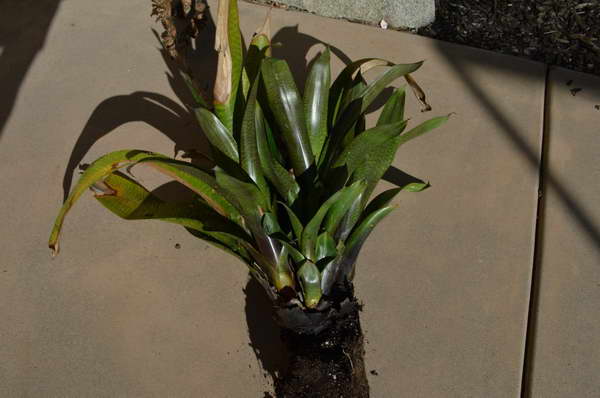

How to separate and transplant babies vriezii photo
Your vriezia has faded and you don't know what to do? It's simple: take care of the plant in the usual way until its children grow up and the mother plant begins to die. If you do not need seeds, it is better to remove the faded arrow immediately so that it does not take away strength from the flower. When the children begin to compare in height with the uterine bush, it is time to start dividing and seating the children.
The easiest way to propagate Vrieseia is by shoots taken from the mother plant after flowering. They are very carefully separated along with the roots and transplanted into small pots. From the moment of separation, the temperature of 24 degrees and high humidity are maintained for 3 weeks.


How to separate children in a photo
You can place containers with babies in a translucent plastic bag, leaving a small hole at the top for ventilation. Usually, the shoots are separated from the dead rosette when they reach 1/3 of its height. It is better if it is a warm season, when the daylight hours are long. If it is necessary to separate the children in winter, then for successful rooting, a long daylight hours should be organized using a fluorescent lamp and bottom heating.
Reproduction of vriezia photo
Rooting is slow, do not be afraid: Vriezia very slowly restores the root system, you just need to wait and not be zealous with watering, so as not to provoke rotting.
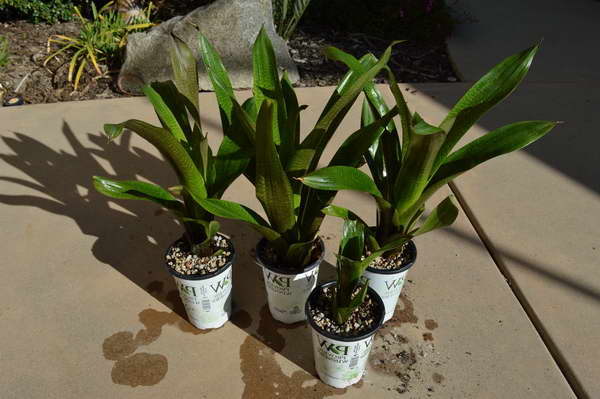

How to transplant babies vriezii photo
Planted children feel great without watering, it is enough sometimes to pour a small amount of water into the outlet, checking how the plant reacts. Avoid excess moisture, but also do not overdry the soil so that delicate roots can easily break through into the substrate. The problem of light humidification can be solved with a conventional spray gun. Just spray the soil until it is lightly moistened, noticing that it has dried out.
Transplant and breeding methods


The plant purchased in the store is in transport soil unsuitable for development. However, you should not rush to transplant if the plant is in the flowering stage. Vriezia does not tolerate transplanting very well due to its weak and sensitive root system.An adult plant should be transplanted no more than once every five years or in case of reproduction. The optimal time of the year for this is May and June.
How to transplant Vriezia?
For transplanting, it is better to use a special soil or prepare it yourself. The mixture should include: coarse sand (1 part), pine bark (1 part), leafy earth (2 parts), turf soil (1 part). It is necessary to pour drainage on the bottom of the pot, after mixing it with activated carbon. This is done to prevent root decay and the appearance of fungus. You can add sphagnum moss to the soil. For transplanting a plant, it is better to choose wide flat containers. After the drainage layer, a layer of ready-made soil mixture is added, the plant is installed, the remaining soil is poured on the sides and top. The plant is watered abundantly and placed in a well-lit place away from direct sunlight.
As an epiphytic plant, Vriesia can be grown at home. To do this, it is necessary to very carefully wrap the fragile roots with sphagnum, a thin nylon thread (fishing line) or wire, then fix it on the selected object. The base can be a driftwood, a large piece of bark, a support wrapped in coconut fiber, stones, shells, etc.
Reproduction


There are two ways of breeding Vrieseia:
- seeds;
- shoots.
Plants grown from seeds begin to bloom at 3-4 years of age. But since hybrids are often found among domestic plants, offspring obtained from seeds can be very different from the mother plant. Therefore, it is recommended to purchase seeds in specialized stores. After processing the seeds in a weak solution of potassium permanganate, they are sown in finely chopped sphagnum moss or a mixture consisting of peat and sand. The optimum temperature for seed germination is +24 degrees. Young plants will appear from 10 to 20 days. It is better to keep seeds and young shoots in a greenhouse at a stable temperature. After 3 months, the plants can be dived.
It is much easier to reproduce by shoots that form at the root neck of the plant. When a young daughter plant reaches a height of 1/3 of the mother, it can be separated and planted in a mixture of leafy soil, pine bark and sphagnum. The planted shoot is placed in a warm, well-lit place, covered with polyethylene. It will be possible to leave the plant without shelter in a month, having previously prepared it. To do this, during the week, the plastic bag is briefly removed once a day so that the plant gradually acclimatizes.
Vriezia from seed
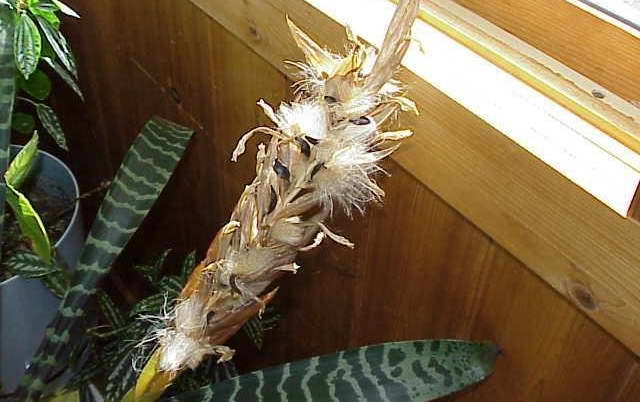

Vriezia seeds photo
Vriese can be propagated by seeds that look like dandelion. They should be sown on sphagnum, filter paper or cotton pads. Seeds are rarely laid out. The plantings are placed in a transparent container with a lid, which is placed on the upper shelves of the kitchen, where it is warmest. The first shoots appear in two weeks. When transplanting, simply carefully cut out a sprout with a root ingrown into paper or cotton wool with scissors, transfer it to a prepared pot with a suitable soil.
It is not necessary to cover the sprout with earth. Make a small indentation and plant a seedling. The ground should be constantly moist, and it is better to close the pot with a glass jar. Flowering will not come earlier than in 10 years. To speed up the flowering of an adult specimen, stimulation with ethylene is used - an overripe apple, pear or banana is placed near the outlet at night. You can put the whole plant in a bag of ripe fruit for a while.
Photos of vriezia
Read: Gardenia - application in landscape design, care features and plant description options (125 photos and videos)
Did you like the article? Please share with your friends 

0
Write a comment
New design
Provence curtains - design ideas and an overview of the ideal combinations of curtains in a rustic style (110 photos and videos)
Minimalism in the apartment - interior ideas and design options.Tips for applying different styles (100 photos)
Kitchen-living room 20 sq. m. - design ideas, interior design options and an overview of the most stylish combinations (110 photos)
Living room decoration - tips for choosing colors and materials. An overview of the most beautiful living room design ideas (90 photos + video)
Pests and diseases
All failures when spinning this extraordinary flower are due to improper care or placement. The spike-shaped inflorescence rots when the temperature drops below the comfort zone - drain the water from the central funnel and move the flowerpot to a warmer place.
If the leaves dry
If the tips of the leaf blades become brownish, dry out, curl, then the humidity in the place of detention should be increased.
Achieve constant sufficient moisture by placing sphagnum moss on top of the soil on the pot. Keep it moist - the fumes will go to the leaves of the flower, thereby increasing the moisture around the plant.
Vriezia has withered and is covered in cobwebs
Sometimes a spider mite appears on plants. If the leaves wither, there is a thin cobweb, treat with an appropriate insecticide. Treatment alone will not be enough, since the drug acts only on adult pests. In a few days, new larvae will appear. Therefore, the treatment is repeated no later than 5 days later, until they lay new eggs. And it is best to process it three times.
The insecticide should be changed with each spraying, as the pests quickly get used to the poison. In addition to the mite, Vriezia is attacked by various scale insects, scale insects. To get rid of them, you should wipe the leaves alternately with soap and alcohol solution. The solution is tested first. Just moisten a cotton pad with vodka and wipe one piece of paper. If it has not changed in a day, you can process the entire flower. If stains appear on the vriezia, dilute the vodka with water and repeat the treatment.
Black bloom on Vriezia
Another attack is a sooty mushroom. It settles on the upper side of the leaf plates in the form of a black sooty film. By itself, it is not dangerous, but photosynthesis is disrupted from plaque, and this leads to a weakening of the plant. A flower with a black bloom looks unattractive and sloppy. It can be easily washed off with plain water. Add some laundry soap to it to set the result and ward off some parasites.
Usually we bring pests into the house with other green pets, acquiring them in garden centers and shops. Each new plant should create a kind of quarantine, placing it at a distance from your collection. In greenhouses where flowers are grown, the spread of insects is suppressed by various drugs, but they cannot destroy everyone. They will be happy to move to your specimens. It is better to immediately treat a beginner with a complex preparation.
Another source of infection is bouquets. If a vase with donated roses or chrysanthemums, where there were pests, turns out to be near indoor plants, then certainly in the near future a breeding ground for pests will appear in your miniature garden. If you take into account these important points, then you can avoid many unpleasant consequences by protecting your pets from parasites.
Lighting and temperature control
It was mentioned above that this flower is very thermophilic. Based on this, Vriezia will feel better on a west or east facing window in summer and in winter on a south window. Even if this flower is thermophilic, it does not like direct sunlight.
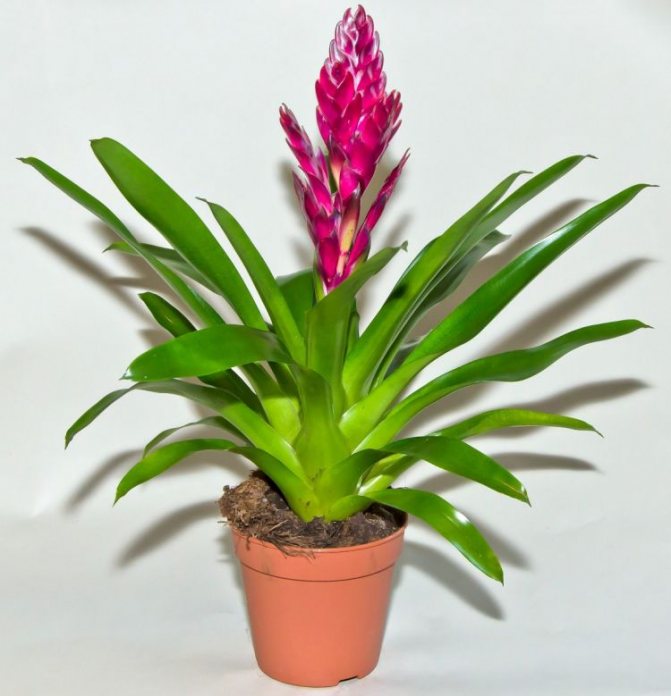

The vriezia flower is shade-tolerant, so the best place for it is in the back of a well-lit room. It is also important to take into account the temperature regime of the room.


Signs and superstitions about Vriese
Bright vriezia with powerful strong leaves symbolizes confidence and purity of thoughts, attracts success, fame, recognition, contributing to the comprehensive development of the owner's personality, helps to get rid of excessive conservatism. Perfectly cleans the air in the room from dust and many harmful substances, humidifying it.
- Vriezia has an active powerful energy that charges others with cheerfulness and love of life, suppresses monotony and monotony.
- Promotes the development of intuition, delicate taste, self-confidence, stimulates the search for new solutions, gives an impetus to the development of abilities.
- It is believed that vriezia, placed in the bedroom by the bed, is an aphrodisiac that stimulates male potency.
- It is worth settling this slightly capricious beauty at home, as you will notice many positive changes in your life. And the unusual view captivates once and for all the hearts of lovers.
Potential problems with growing Vrieseia
After flowering, Vriezia may die off, but, as a rule, children remain, with which the plant propagates.
Popular pests that settle on Vriezia are scale insects and scale insects. To combat them, the leaves of the plant are washed with a soapy sponge and then with water at room temperature. In this case, the soil should be covered with a film so as not to absorb soapy water.
Watering vriezia should not be abundant; otherwise, waterlogging leads to root rot.
Decay of the leaves indicates that there is a regular stagnation of water in the outlet. This can happen when spraying, so it is important to ensure that no water remains in the leaf outlet.
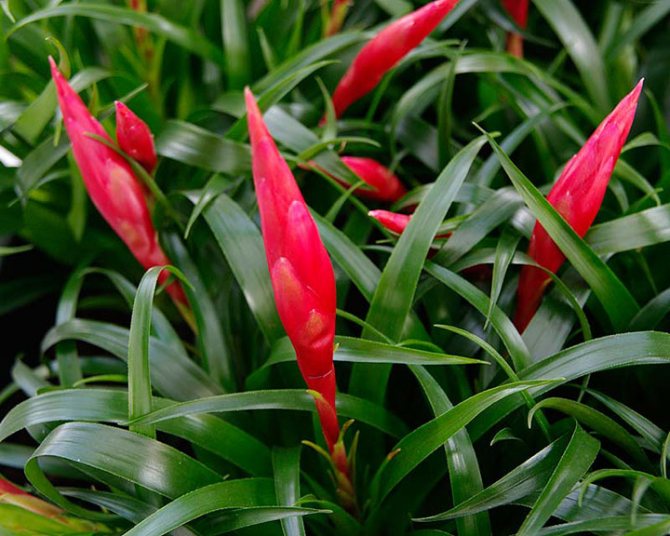

Types of vriezia with description and photo
Vriesea brilliant Vriesea splendens
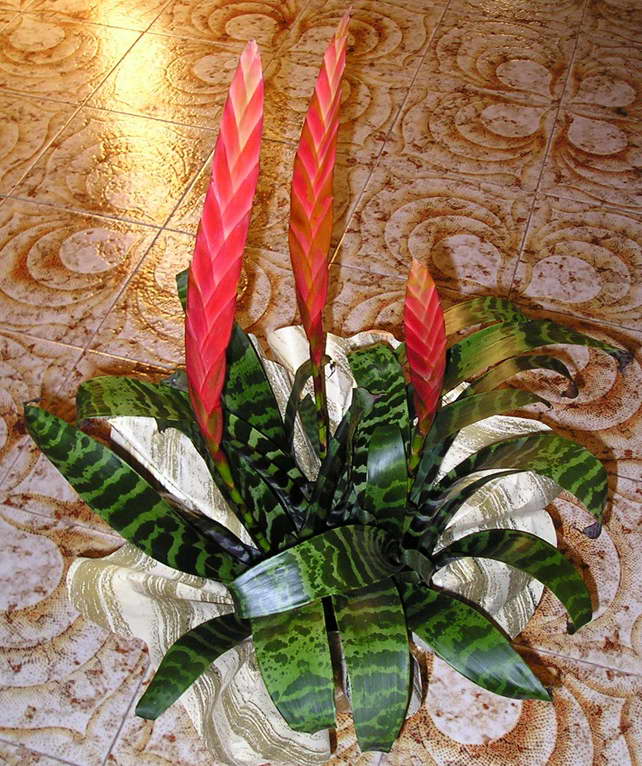

Vriesea brilliant Vriesea splendens photo of a houseplant
Most often found on sale and is also called a fiery (blazing) sword. A characteristic feature of this species is a tall, elongated peduncle with tiled inflorescence leaves. The length of the peduncle with the inflorescence can reach 55 cm. On the leaves, covered with hard scales, dark perpendicular lines are located, creating a striped pattern. Considered the best for growing on windows and shelves
Vriesea keeled Vriesea carinata
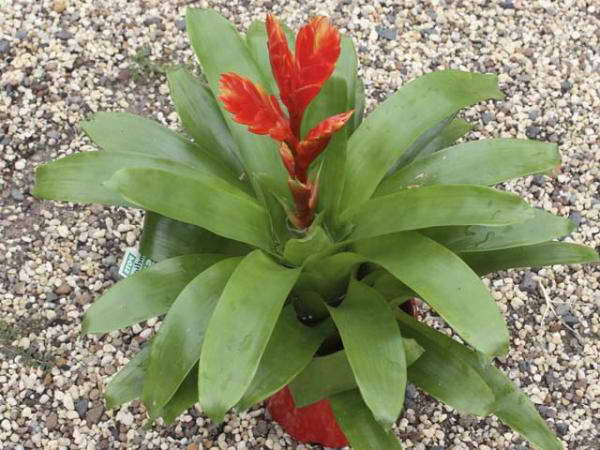

Vriesea keeled Vriesea carinata photo How to care
A plant with a thin peduncle and pale yellow leaves. Unlike other species, it grows only about 30 cm. She is also a Brazilian, found in two forms - a terrestrial plant and an epiphyte. On a low peduncle reaching 35 cm, a short inflorescence formed by yellow flowers with green tops on short pedicels develops. There are inflorescence leaves with a sharp keel, the top of which is colored yellowish-green. The inflorescences are pink.
Vriesea giant Vriesea gigantea or checkerboard, mosaic
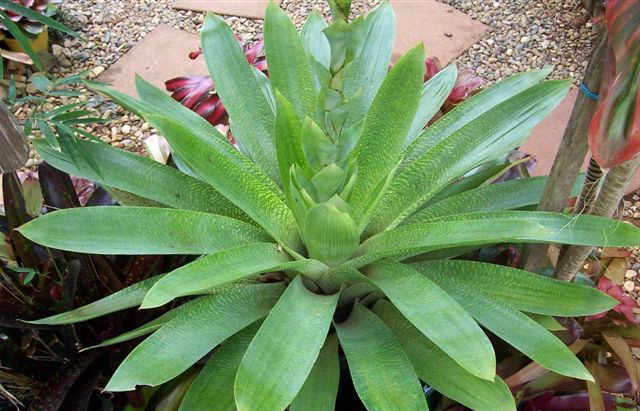

Vriesea giant Vriesea gigantea or checkerboard, mosaic photo
It features a large rosette of leaves covered with a golden mesh pattern, and a scattering of splashes around the edges. Can reach 1.5 m in diameter. Suitable for common areas.
Vriesea golden spikelet Vriesea chysostachys
Vriesea golden spikelet Vriesea chysostachys photo of flowers
This species can be easily recognized by its long yellow inflorescences and maroon turnover of the leaf blades.
Vriesea curved Vriesea incurvata
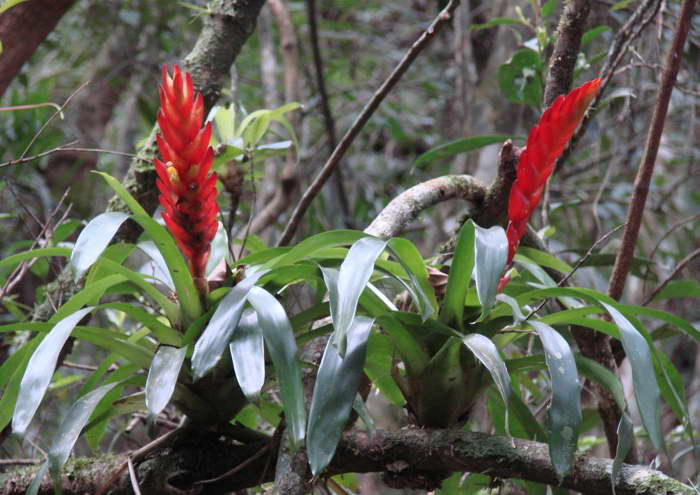

Vriesea curved Vriesea incurvata photo
It has small elongated leaves and a short peduncle.
Vriesea perforatum Vriesea carinata
Vriesea perforatum Vriesea carinata
Differs in specks on sepals. The leaves have a huge number of longitudinal and transverse stripes.
Vriesea Saundersii
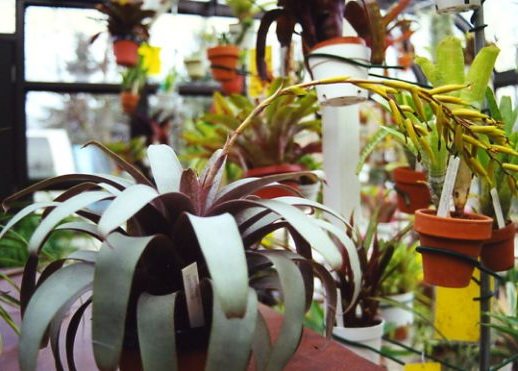

Vriesea Saundersii
The leaves curl downward, their upper part is covered with ash-colored scales, and the lower one is speckled with brownish dashes and specks. It is a terrestrial plant. Magnificent all year round.
Vriesea hieroglyphica
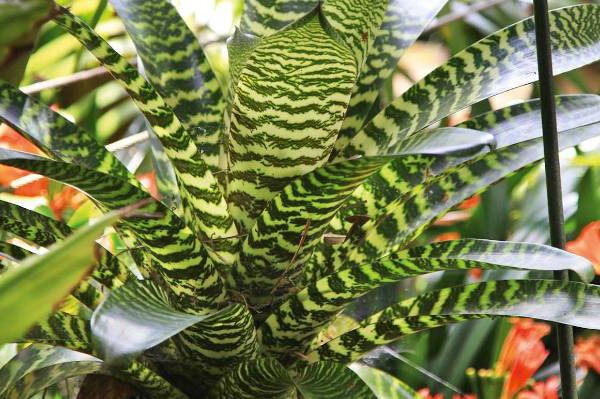

Vriesea hieroglyphica
It is considered one of the most attractive. On the dark green leaves, a very peculiar, beautiful, emerald pattern appears, reminiscent of torn transverse stripes or a pattern of broken Latin letters. Wild species are actively used for breeding cultivated hybrids. Specialty stores often offer Vriezia Mix.
It does not occur in nature and is specially bred. These plants are compact, coexist with other home flowers without problems, bloom stably, do not cause specific trouble. When buying, find out what type your vriezia belongs to, which will greatly facilitate further care of such a whim.
Vriesea fosteriana


Vriesea fosteriana Vriesea fosteriana photo
The wide, dense, shiny leaves have a fantastic color: purple-violet at the center of the rosette, towards the edge they acquire a bright green color. The look is completed by feathery white stripes located across the sheet plate. Very nice!
Vriesea Ospina Vriesea ospinae


Vriesea Ospina Vriesea ospinae photo
Lemon-yellow spike-shaped inflorescences effectively contrast with massive motley-striped leaves with the participation of olive, burgundy, dark green flowers. The leaves are wide, dense, with a slight waxy sheen, collected in a dense rosette.
Description of the variety
Vriezia is one of the most decorative representatives of the large bromeliad family. Perennial. Refers to epiphytic (growing or permanently attached to other plants) herbaceous plants. Vriezia is home to the rainforests of South and Central America, including southern Argentina and Brazil. The plant is also widespread in the West Indies.
The correct name of the plant is pronounced Frizee (Vrisee). But in literary sources and in everyday life, the plant is called vriezia - from the transliteration of the scientific name.
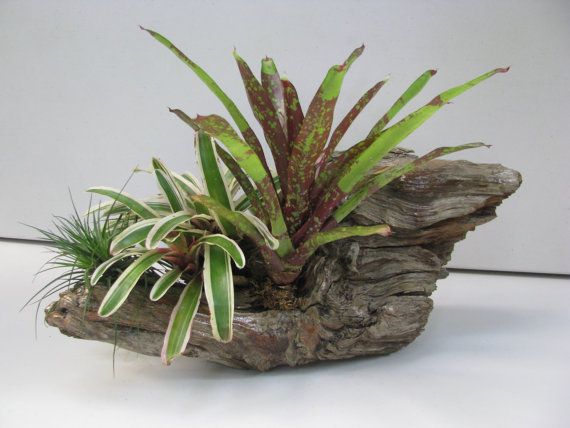

Vriezia leaves are leathery, curved, and have smooth edges. They form a rosette, the center of which is a container for collecting rainwater. Many plant species have various colors in the form of stripes and spots, some are covered with scales. There are also plain colors. The length of the leaves reaches from 20 to 80 cm. The width of the leaf is 4 to 8 cm.
The peduncle is long, sometimes reaching up to 1 meter. On it, spike-shaped multi-flowered inflorescences are formed, with bracts of various colors. They can be monochromatic - red, yellow or multicolored - red-orange, yellow-red. Bracts last for a long time - several months, flowers wither very quickly. The fruit is a box, inside of which are seeds with tuft-shaped appendages.
Because of the spike-shaped, flat inflorescence, the Vriese is called the Flaming or Shiny Sword.
The roots of the flower are voluminous and weak. They have practically lost the function of absorbing nutrients and serve to attach and retain vriezia on the substrate. Vriezia receives the necessary nutrition and moisture from the leaf funnel.
Under natural conditions, the vriezia leaf funnel can accumulate up to 4.5 liters of water.
Under natural conditions, the plant grows in tropical rainforests at an altitude of 2500 m above sea level. With the help of roots, it attaches itself to the bark of trees (it does not feed on tree sap), snags, rocks. In the southeast of Brazil, the cliffs are carpeted with various types of vriese and tillandsia.
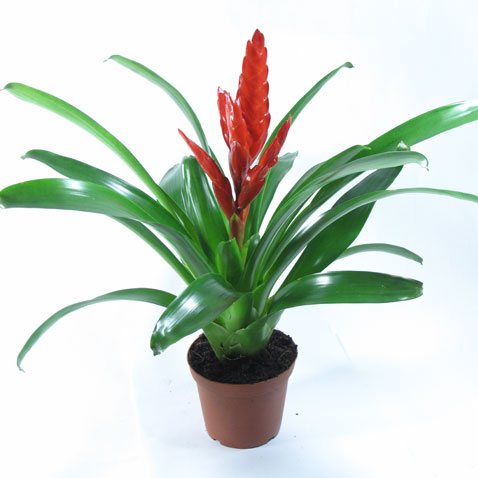

In nature, there are almost 250 species of Vriezia. But in home floriculture, 150 species are used.
Vriezia is very unpretentious and can successfully adapt to home conditions. But do not forget that Vriezia is a resident of the tropics and before buying it is worth considering whether you can provide the plant with suitable conditions throughout the year.
Care errors and their elimination
Vriezia is resistant to disease, but with the wrong care, certain problems can arise:
| Problem | The reasons | Solutions |
| Decay of roots and leaves | Excess moisture Cool air | Increase the air temperature Reduce the number of waterings Drain the sump and funnel |
| Lack of daughter education | Malnutrition | Fertilize with mineral dressings |
| Leaves are soft and drooping | Low room temperature | Maintain a comfortable temperature at all times. Do not allow her to drop. |
| Brown spots | Sunburn | Remove the flowerpot from the windows deep into the room or shade from the sun with a curtain, paper |
| Drying and curling of leaf tips | Dry air Insufficient watering | Spray the leaves daily Pour wet pebbles into the pallet Check that there is water in the funnel |
| Lack of flowering | Too cold or too hot Dry air | Put the flower in a warm, bright place Regulate watering and spraying Stimulate flowering by placing ripe fruits next to each other |
What to do when vriezia has faded?
Unfortunately, after the inflorescence dries up, the leaf rosette of the plant begins to die off slowly, having previously given life to several lateral offshoots, children.
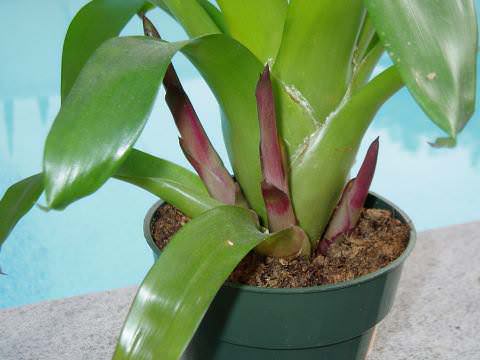

It is necessary to water in the same mode, and cut off the dried peduncle so that the Frizee focuses its energy on the reproduction of children, which look like miniature versions of the parent flower.
The lateral shoots can begin to form at any time, but most often this occurs immediately after the start of flowering, when the adult Frizee reaches its peak of development and stops forming its own new leaves.
Features of seasonal care
At each time of the year, the conditions for keeping Vriezia are adjusted:
| Season | Lighting | Humidity | Watering | Temperature |
| Spring | Scattered, bright. | The optimum humidity is 60-70%. Spray the leaves 2 times a day. Pour wet pebbles or expanded clay into the pallet. | Water every other day. Pour water into a sheet socket. Moisten the soil, but avoid stagnation of water in the pan. | The optimum temperature for development is + 22-24 degrees. Maximum - 32 ° C. |
| Summer | Shade from direct sun. | |||
| Fall | Bright lighting. | Spray daily. If the temperature is low, stop. | Reduce watering frequency. At temperatures below +20 degrees, remove water from the funnel. Allow the top ball of soil to dry before each watering. | During the rest period, a temperature of 18-22 ° C is permissible. It cannot go below 15 degrees. |
| Winter |
How is the flowering period
Vriezia begins to bloom only after 3-4 years, and this period usually lasts no longer than several months, but the plant variety plays a significant role in this matter. If suddenly Vriezia does not bloom for too long, do not rush to despair - there is always a way out. In this case, everything depends on the plant's dependence on ethylene, which stimulates both the beginning and the duration of flowering.
This can be easily achieved by building a kind of greenhouse around the vriezia and putting a fresh apple or banana inside, which are an excellent and readily available source of ethylene, which will speed up the flowering process by several months. The fruits will need to be changed periodically to prevent them from rotting and attracting insects.
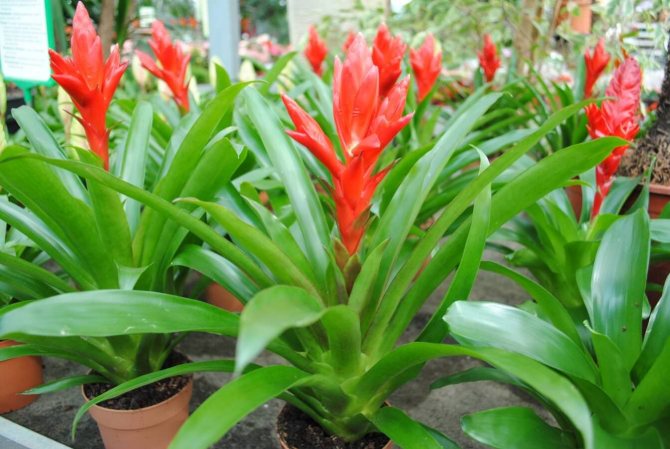

You can immediately determine the dying off of vriezia by the faded colors of the bracts and the modification of their scales, which begin to become soft and die off rapidly. Bright bracts very quickly lose their attractiveness and dry out. At the final stage of this process, if you do not need seeds for propagation, the peduncle will need to be cut off. This will entail a gradual dying off of the outlet and, after that, a gradual cut of the foliage.
Plant species
The variety of plant species is present not only in the conditions of its natural habitat, but also in culture - more than 170 varieties of Vriezia are suitable for cultivation at home. In the rainforests, where the flower comes from, you can find the most incredible colors of the plant, which in total are divided into two types - with plain and striped leaves. Let's consider each of them in more detail.
With plain leaves
Vriezia with leaves of a single color looks no less decorative and attractive, therefore it is also in great demand among lovers of exotic flowers. The main types of plants with solid foliage are as follows:
- Vriezia astrid - a very popular indoor variety, which differs from the rest in its compactness and long, abundant flowering. An unusual type of inflorescence, which resembles a large bouquet of flowers, creates a very high level of decorativeness of the plant. The leaves of the flower are lanceolate, bright light green, very fragile and pleasant to the touch. Under proper conditions of detention, as a rule, from 3 to 6 scarlet peduncles are formed. Like all other species, Vriezia astrid is also subject to rapid death after flowering, but it is also capable of recovering no less quickly. Vriezia astrid blooms all summer long, requiring a stable high humidity, so caring for this variety is not easy.


- Vriezia keeled - a plant of a bizarre shape, growing only up to 40 cm in height, with red, yellow, green or pink bracts. The homeland of this variety is Brazil, where the flower grew in conditions of tropical humidity, which in the room, especially with dry air, will have to be maintained in the same way. Vriezia keeled bloom is observed throughout the summer, starting from the end of May. Smooth, elongated foliage is painted in a dark green color, and the leaf plates, which are located next to the inflorescence, have a slightly purple hue. A thin and graceful peduncle is decorated with a bizarre triangular inflorescence, most often red or yellow in color.


- Vriezia mix Is another decorative indoor representative that attracts attention with the rich green color of foliage and petals. The bracts themselves, usually yellow or red, are covered with scales. The appearance of the plant resembles a festive bouquet painstakingly created by a florist, so the flower can also serve as a wonderful gift. The flowering period of Vriezia mix falls on winter, closer to the beginning of March. A huge number of hybrids have been bred, characterized by spectacular and long flowering.
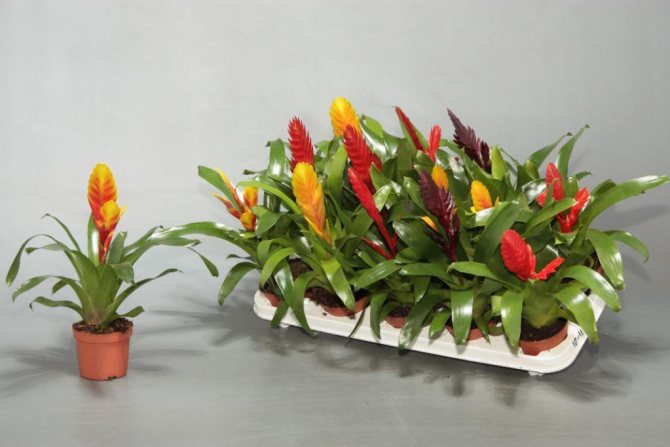

- Vriezia royal - this giant, whose leaves exceed more than a meter in height, is completely unsuitable for keeping in a room, but it can successfully grow in a garden or a greenhouse. The usual conditions for this variety are the tropics, where the plant came from. An equally large peduncle forms an inflorescence, similar to a panicle, of an expressive yellow-white color, and it also emits a sweetish and very delicate aroma. The foliage is dark green, formed from a peculiar funnel, belt-shaped, the leaves are quite strong to the touch. The bracts are usually pinkish in color, which favorably sets them off from the leaves.
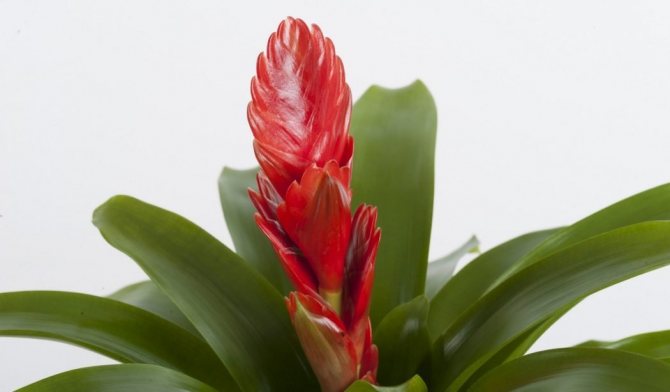

- Vrienzia parrot - the name of this variety speaks for itself, because the color scheme of the plant really resembles the color of a parrot. The flowers, formed into loose inflorescences, are yellow in color with a greenish corolla, and the peduncle itself is bright red. Linear leaves of a solid dark green color, with a pointed apex and significant expansion towards the base.
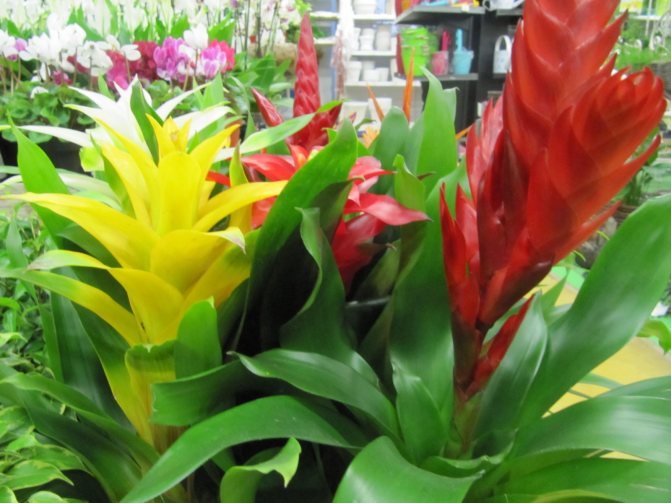

With striped leaves
These bright representatives of the general appearance of the flower attract the eye not only thanks to the colorful inflorescences, but also to the unusual decorative foliage. Many gardeners choose these very varieties of Vriezia as indoor plants, and not so much even for their flowering, as for their motley appearance.
Did you know? Vriezia leaves are always perpendicular to the light falling on them.
The most colorful samples include the following:
- Vriezia brilliant - a terrestrial plant with small dark green leaves. Like other varieties of this variety, the color of the foliage of the shiny vriezia is remarkable - the transverse purple stripes form an impressive funnel-shaped rosette.The inflorescence is spicate, the scarlet peduncle is thin and oblong, and the glossy bracts are usually yellow in color. This vriezia blooms, as a rule, all summer, if you take care of it properly, and the recovery period after withering away, unlike the others, passes rather slowly. The flower reaches a height of 70 cm. This is one of the few varieties, the flowers of which emit any smell - an alluring, sweet aroma.
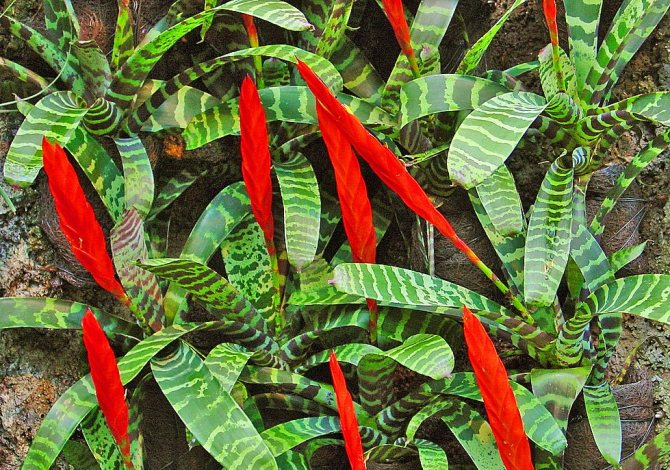

- Vriezia hieroglyphic - highly valued in culture for its beauty and exoticism. The unusual name was given to the variety for a reason - it's all about the unusual spots on the plant, which are very similar to various symbols. The flowers look very decorative. Arched foliage, located in a giant rosette, is decorated with light stripes, the inflorescence looks like a panicle. Bracts are usually bright green in color, but hybrids with a red or yellow tint are also widespread.


- Vriezia perforated - due to excessive decorativeness, this variety of Vriese is usually cultivated in greenhouses. Wide, belt-like leaves, up to 45 cm long, also form a funnel. The view is remarkable for its arrangement of stripes - they can go both along and across. Flowering is short and lasts no more than two months - from late November to January. The peduncle is quite large and durable, most often it rises above the rosette. The natural habitat of the perforated vriese is the rainforests of eastern Brazil. The flower itself is epiphytic, it can also be found growing on stones and rocks.
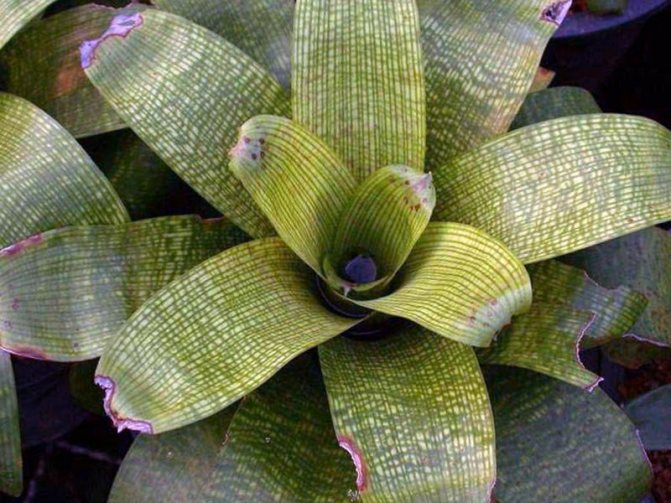

Reproduction
Vriezia reproduces in two ways: lateral shoots and seeds.
At home, Vriezia is almost always propagated by lateral shoots. After flowering, the mother plant begins to die off, but at the same time it gives life to young plants. Do not rush to transplant them. The lateral shoots should have roots. In addition, young plants must necessarily reach half of the growth of the mother plant. This process can take 8 to 12 months. Experienced growers recommend starting the rooting process of lateral shoots no earlier than 2 years after the start of their formation. During this time, the children will become quite strong and acquire their own root system.
Reproduction by shoots - a step by step process
- Carefully remove the mother plant along with the side shoots from the pot.
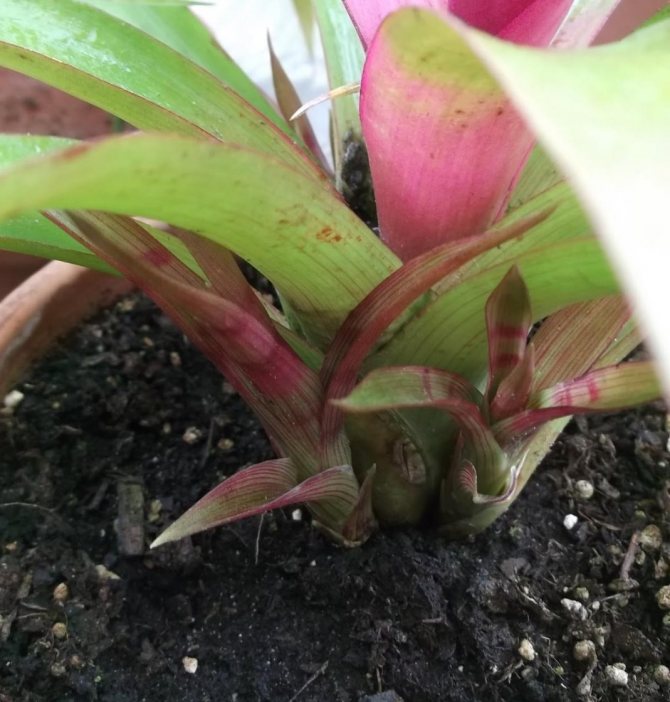

Mother plant with lateral shoots
- Free the roots from the soil by rinsing them in water.
- Use a sharp knife to separate the shoots from the old plant so that each shoot has roots.
- Sprinkle the slices with crushed coal.
- Treated shoots should dry out for about a day.
- Pour a layer of drainage and soil into the prepared pot.
- Place the side shoot in the center and fill up the rest of the soil.


Rooted lateral shoots of Vriezia
To prepare the soil you will need: fertile soil, chopped sphagnum moss, pine bark and coarse sand. Mix in a ratio of 3: 1: 1: 1.
A planted Vriezia shoot needs warmth, so we cover the pot with a mini greenhouse or a glass jar, keeping the temperature inside at 26 - 28 degrees. After a month, you can do small airings, gradually increasing the time the plant stays outside the greenhouse. After another month of hardening, the greenhouse can be removed completely. You can transplant a young plant in a year. Young Vriesias are cared for like adults.
The best time to root young plants is spring. Shoot survival rate is not very high, but if the plant is rooted, with proper care, it will bloom in 3 years.
Seed propagation is most often used in the greenhouse industry. This method does not guarantee success; moreover, it is very time consuming. It is very difficult to obtain plant seeds at home. To do this, you need to use artificial pollination - with the help of a soft brush, transfer the pollen of one flower to another.If you succeed, then you can try to get new plants from seeds.
Seed germination process
- Wait for the seed box to dry and crack.
- The extracted seeds are left in a warm place to dry for a day (avoid sunlight).
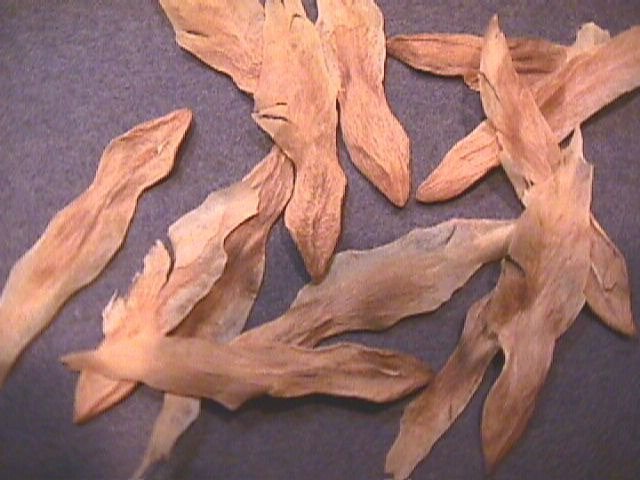

Vriese seeds
- Before sowing, treat the seeds in a weak solution of manganese or fungicide and dry.
- Pour a disinfected mixture of equal parts of peat and sand into a container for germination.
- Spread the seeds evenly on the prepared soil mixture.
- Moisten evenly with a spray bottle and cover with plastic wrap or glass.
- The temperature inside the shelter should be 25 degrees.
- Ventilate and moisten the seedbed periodically.
- If all norms are observed, shoots will appear in about a month.
- After the appearance of the third true leaf, make a pick into separate pots.
- After 6 months, repot the plant again and take care of it like an adult.
A plant bred from seeds does not retain varietal characteristics. In addition, it will take a long 5 years to wait for flowering, possibly longer.
It turns out that vriezia is popular not only for its beauty. Psychologists say the plant helps relieve stress and instills confidence in even the most hopeless pessimists. And bioenergetics claim that vriezia is able to activate masculine strength. This is why Louis XIV's bedroom was decorated with these magical flowers.
The most common varieties
Those who are engaged in indoor floriculture conditionally divide Frizei into monochrome and variegated.
The first category includes:
- Frizee keeled... The leaves are soft, hanging under their own weight almost to the ground. Compared to other species, they are rather short (18–22 cm) and light. On both sides, the leaves are covered with a continuous layer of inconspicuous scales. The peduncle is also low - 25–30 cm. The inflorescence is short and wide, but the bracts are thin and narrow, bright scarlet, along the edges there is a lime-colored border. In natural conditions, it blooms twice - in summer and late autumn.
- Frizee royal... Leaves in natural conditions are very long (up to 150 cm), an unusual gray-green shade. The peduncle is high (more than 200 cm). The inflorescences look like brooms or soft brushes. The flowers have a pleasant aroma. They bloom snow-white, by the time of wilting they turn yellow. Bracts are pale pink, boat-like in shape.
- Frizee parrot... It is distinguished from other varieties by its bright scarlet peduncle. The same color at the base of the bracts gradually turns into yellow through orange. The flowers are yellow, the bases of the petals are yellow-green.
- Frizee large... The leaves are long (up to 150 cm), but narrow (8-10 cm). At the top, they curl slightly. Peduncle erect, very strong, hollow from the inside. Bracts are green at the base, above this color turns into yellow-orange. The flowers are pale yellow, large (12-15 cm in diameter).
- Frizee Rodriguez... A very ornamental plant due to its bright yellow peduncle.
Photo gallery: popular monochromatic frisees


Frizea Rodriguez has a bright yellow peduncle
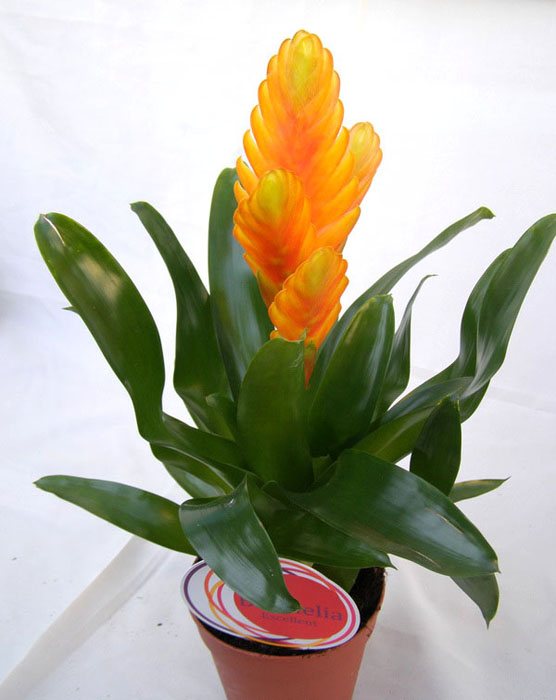

The Frizee is large, despite the size that it differs in the wild, has successfully taken root in indoor floriculture


Frizee parrot has not only scarlet bracts, but also peduncles of the same color
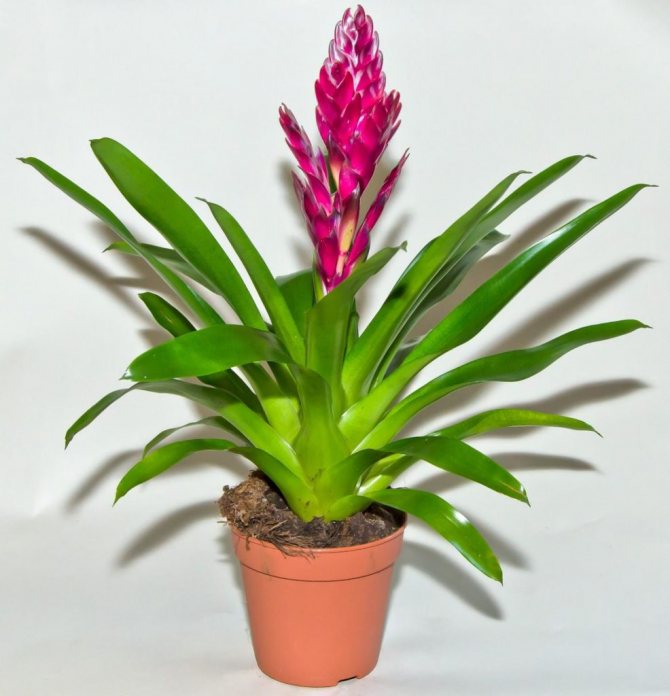

Frizee royal received this name for the regal purple shade of the bracts
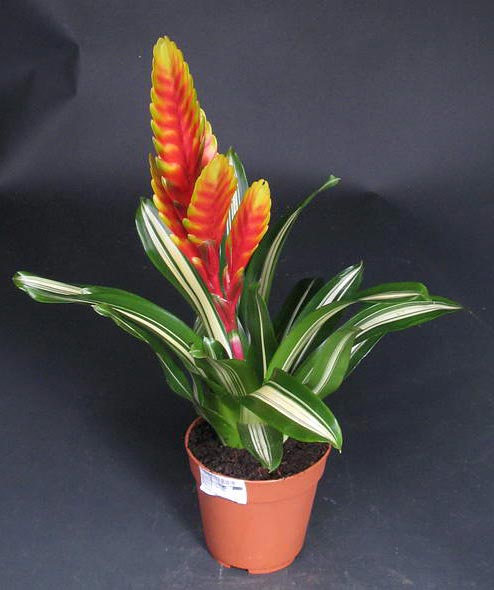

Compared to other species, the keeled Frizee has a rather sloppy rosette.
Variegated Frises:
- Frizee brilliant (she is beautiful, or splenriet). Nickname - "tiger bromeliad"... Above, the leaf plate is dark green, along it there are thick horizontally located reddish-purple or reddish-brown stripes. Both sides of the leaf are completely covered with well-visible, slightly convex scales. The bracts are glossy-shiny, bright scarlet, sometimes with a shade of orange. The flowers are pale yellow.
- Frizee perforated... Only the outer side of the leaf plate is covered with scales. Its main tone is light green, a reddish tint appears at the top. A pattern of horizontal and vertical thin stripes is characteristic. The flowers are pastel yellow. Bracts are rather inconspicuous, covered with brownish-green spots.
- Giant Frizee (aka chess, or mosaic)... The leaves are relatively short, so the shape of the rosette is more like a glass. The main color of the leaf plate is dark green. Above it is covered with chaotically located yellowish spots, below - reddish-purple. The height of the peduncle is at least 150 cm. Therefore, it is quite problematic to grow this variety at home. In addition, in "captivity" to wait for the appearance of bright yellow flowers sometimes does not work even with perfect care.
- Frizee Sanders... The width of the leaves is only about 5 cm. Above, they are speckled with small grayish-brown dots, below - with larger irregular spots. Scales with a gray border are clearly visible. Lime-colored bracts.
- Frizee hieroglyphic... The height of the plant is about 100 cm. The pattern on bright green leaves looks like arcs or letters V. The color of these spots is yellow. Bracts are green. Flowers in nature are yellow, but breeders based on hieroglyphic vriezia have bred varieties with bright scarlet or yellow-orange flowers.
- Frizee Era... A distinctive feature of this plant is a thin elongated red peduncle.
Photo gallery: brilliant frisee, Era and other variegated varieties


From a distance, the pattern on the leaves of the hieroglyphic Frizee can really be mistaken for someone's sloppy handwriting.The Sanders Frizee has very narrow leaves and bracts of an interesting shape
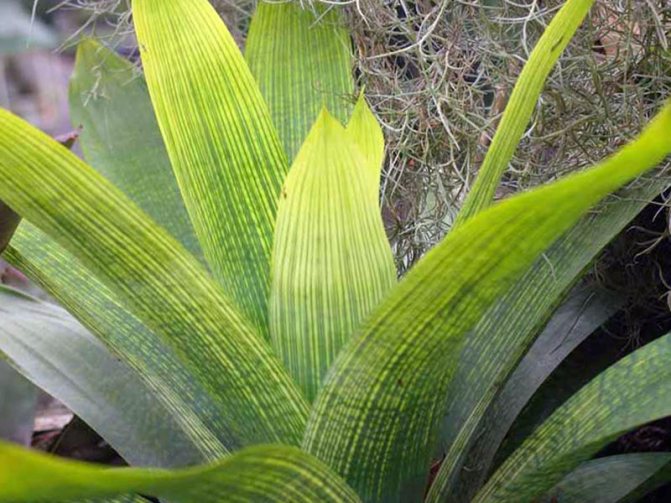

It is almost impossible to grow a giant frieze at home if you do not have a greenhouse.
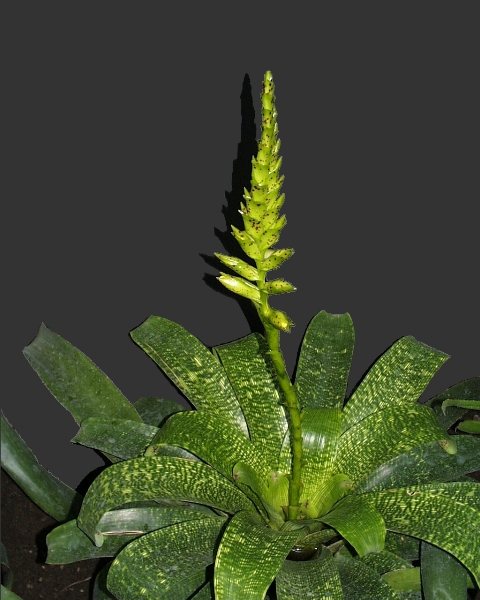

The bracts of the perforated Frizee do not differ in decorativeness, but this is more than compensated for by the leaves
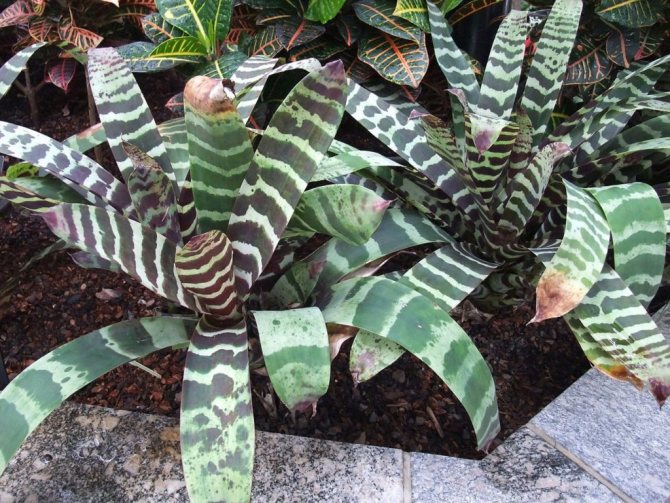

The stripes on the leaves of the shiny frisea resemble the pattern on the skin of a tiger or zebra.
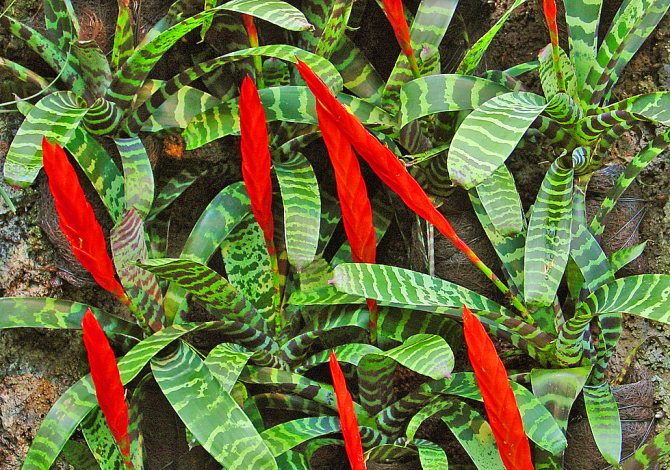

Vriezia Era has an elongated red peduncle
Note! The "mix" varieties of Frizei, which users often look for on the Internet, do not exist - this is how often flower arrangements are called, consisting of several friezes of different colors.
Useful Tips
You can use the unique properties of epiphytes to create decorative compositions. To do this, you need to choose a beautiful branch or a piece of wood with bark, or better with a hole, of an original shape. Gently remove the root system from the pot without damaging it. Wrap the roots with sphagnum moss and tie them with flexible wire or rope, then fix a lump with roots and moss on a branch or in a hole, ensuring vertical growth. Dampen the moss with warm, soft water and fill the flower outlet with water. The composition is ready.
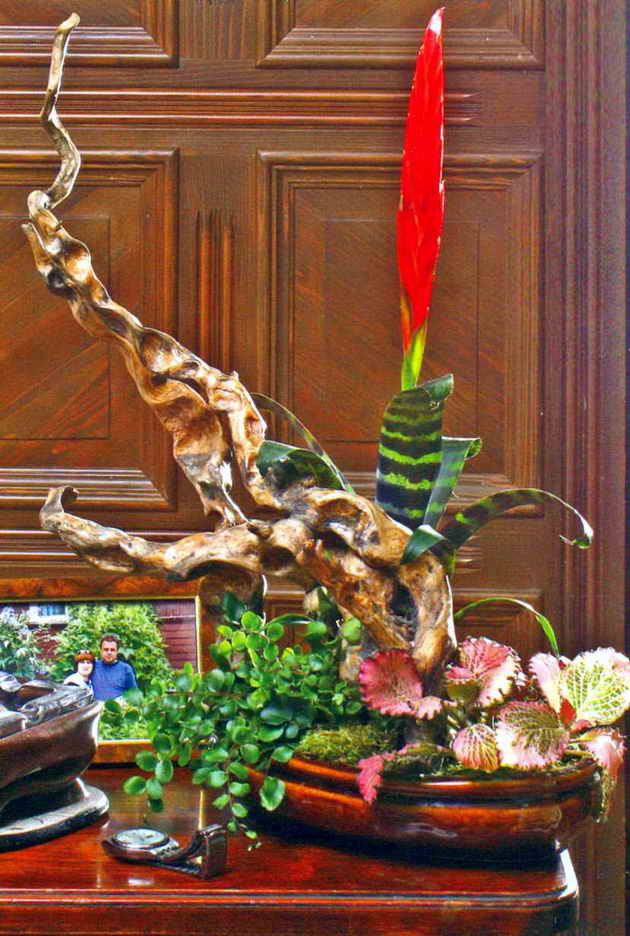

Related entries:
- Pineapple is not a fruit or a vegetable! We will teach anyone how to grow it on their own. Pineapple has a beneficial effect on the state of the whole body, improves mood no worse than chocolate and also mutes the feeling of hunger. We…
- Beloperone with bright feather flowers seems to have come from the fictional world of Red, yellow, the iridescent flowers of Beloperone growing indoors will attract so much attention that you will start it even a little ...
- Cardamom - an unusual spice for growing at home Growing an overseas spice on your windowsill? It couldn't be easier! Content1 Description of the plant2 Where it grows3 Species4 Use5 Useful properties and ...
How to transplant
Transplant is a procedure that the plant does not like very much. Therefore, it is carried out only in case of emergency, no more than once every 3-5 years. Adult plants react especially badly to transplantation. Young without noticeable damage can be transplanted once or twice before the bracts first appear.
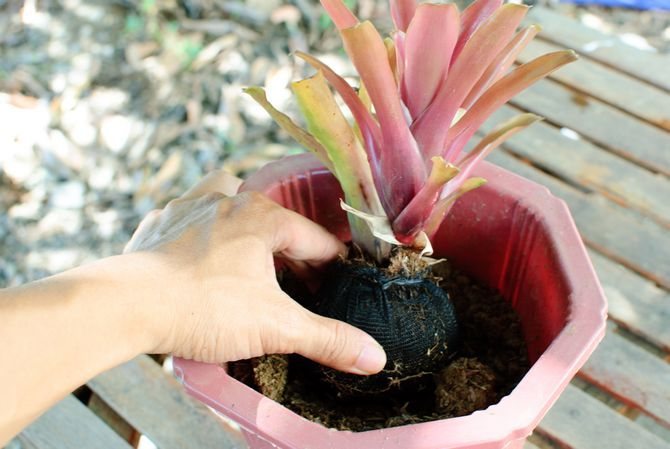

Transplant the Frizee only when the pot becomes very small for her.
Important! A transplant is necessary if you purchased a flower from a store.Wait 14–20 days and carry out the procedure in compliance with all the rules. Store-bought "shipping" soil is not suitable for bromeliads, as it contains calcium.
The only time suitable for transplanting is the phase of intensive growth of Vriezia, from mid-spring to late summer. The best pot is one that is shaped like a bowl or soup plate. You also need a special primer for bromeliads.... Experienced growers prefer to prepare the soil mixture on their own. The following options are possible:
- Mixed in a ratio of 2: 1: 1: 1 fertile leafy, sod land, dry peat and coarse river sand. If possible, add a glass of chopped dried moss or powdered charcoal for every 2 liters of prepared soil.
- Taken in a ratio of 3: 1: 1: 1: 1, fertile leafy soil, coarse river sand, finely chopped fern rhizomes, sphagnum moss and powdered pine bark.
The transplant process looks like this:
- The bottom of the pot must be covered with a drainage layer at least 2–4 cm thick (this is about a third of the height).
In this capacity, expanded clay, ceramic shards, brick chips, crushed stone, pebbles can act.
- Fill the drainage with a layer of soil of the same thickness.
- Place a plant on it, gently spread the roots and add soil to a level 1–1.5 cm below the top of the pot. Make sure that the base of the leaf rosette is above ground level at all times. Otherwise, the plant will rot very quickly.
- Thoroughly, but very carefully, tamp the soil. There should be no voids in the pot, and the roots of the flower are rather fragile and delicate. If damaged, it will take a long time to recover. During this entire period, the Frizee will grow poorly and hurt.
Bromeliad tree
Structures imitating the natural habitat of the Frizee look much more original. It is quite permissible to grow it on snags of an unusual shape, thick layers of bark of any species of coniferous trees or stumps. The frieze looks spectacular on cork oak.
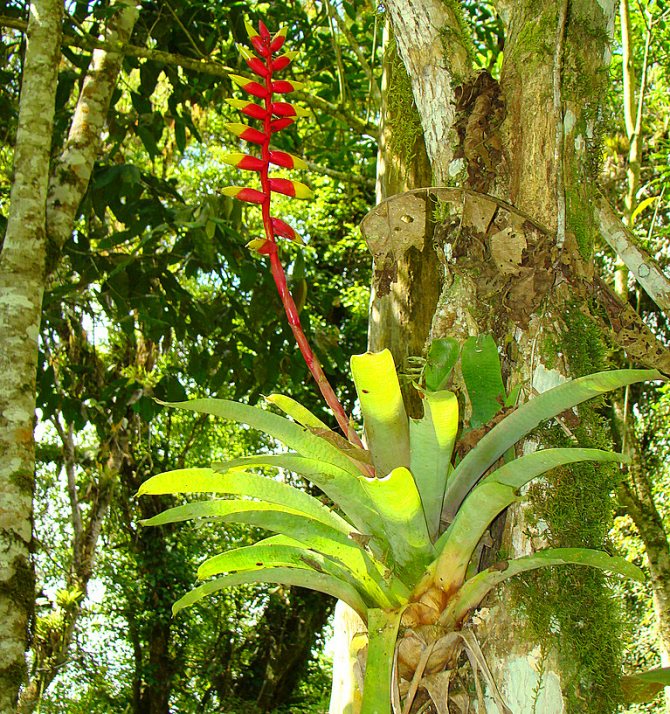

You can try to create something similar to a natural composition at home.
The flower is removed from the pot, the roots are washed and wrapped in wet moss. The flower is attached to the base with a thin cord, nylon thread or wire of a suitable color. Several friezes attached to one support look like a solid composition. It will be well complemented by a indoor fountain. In this case, the question of subsequent transplants disappears by itself. They won't be required at all. But leaving takes more time and effort. Periodically, the plants will need to be detached from the support and given a bath.


In the interior, the bromeliad tree looks very impressive.
Care problems
Due to excess moisture, vriezia can be susceptible to fungal diseases such as gray rot and fusarium. In such cases, watering should be reduced, and the plant should be treated with fungicides.
Drying of the tips of the leaves is a reaction to dry indoor air. Rotting of the roots and damage to the culture by such pests as spider mites, thrips or scale insects leads to yellowing of the foliage.
Diseases of indoor flowers in the photo
If a scabbard has started up on the plant, then it must be removed mechanically. The products of its vital functions are the ideal environment for the sooty fungus. If the plant suffers from pests, then it is isolated from other flowers.
The first step is to use a mild soapy water solution. The leaves are carefully washed, and then treated with special preparations. The appearance of small brownish dots indicates the vital activity of ticks. In such cases, they are treated with acaricides.
- Sections:
- Decorative deciduous
- Beautifully blooming
- Unpretentious
- Bromeliads
- Epiphytes
Comments (1)
kadisha 07/18/2012 11:35 AM And it is difficult to grow bromlevids. I never had them. I still hesitate to buy.
Reply
Refresh comment list
Frequently asked Questions
What to do if the peduncle has dried up?
A common question. Do not despair, this is a natural process.At the end of flowering, it dries up and must be removed. Your pet will continue its life in its children, which are formed at the time of the extinction of the flower. After a while, you will receive new, young plants that will delight you with their beauty.
Why are there no flowers, what should I do?
The delay can be attributed to two reasons: low room temperature and lack of ethylene. To increase the ethylene level, it is enough to put apple slices or bananas next to the pot and cover them with plastic wrap together with the flower. Ripening fruits will release ethylene, which brings the onset of flowering
What to do after flowering?
First of all, you need to wait until the peduncle dries up, then cut it off with a pruner. Be patient and continue to care for the flower until the shoots grow up. We discussed further actions in the section on reproduction.
How to form a bromeliad tree from Vriese
Do you want to surprise your friends and acquaintances? Move away from the standard - growing vriezia in pots or planters. Create a tree out of it. Indeed, in nature, she calmly exists on snags. Using this fact, it is not at all difficult to do this.


Vriezia tree
For the development and existence of Vriezia, the fact of the presence of land is not important.
It is enough to prepare a branch or snag and fasten it tightly in any suitable container. This is achieved using plaster, stones or even polyurethane foam. The roots of Vriezia are cleaned of an earthen coma, wrapped in sphagnum moss and tied to the structure with fishing line or thin wire. Over time, it will grow to the bark and feed from there.
Further care consists in filling the leaf funnel with water and spraying on the moss. Sometimes the plant is detached, immersed in water, taken out and attached to the same place.
Vriezia Sanders (V. saundersii)
In nature, Vriezia Sanders prefers to live on rocky slopes, where more often than other species it lacks moisture. Therefore, the leaves of this plant are quite dense and tough. The width of the rosette reaches 50-60 cm, and its height is 40 cm. Smooth leathery leaf plates have a gray-green color, sometimes with a purple glow, which becomes the most noticeable and bright on the back side.


A straight or drooping peduncle bears a highly branched inflorescence with spike-shaped brushes. Yellow flowers up to 4 cm long are covered with stipules of the same shade.
Landing features
The key points that you should pay attention to when planting a plant include the correct selection of the container in which Vriezia will grow, as well as the selection and treatment of the soil. Since the flower is epiphytic, it can be limited to a small amount of substrate or, in rare cases, do without it altogether, which is important to take into account when planting. Let's consider the rest of the features in more detail.
Important! Make sure that in the composition of the fertilizer you have chosen or made, nitrogen is present in a minimum amount, since this component has a detrimental effect on Vriese. For the same reason, calcium is completely excluded, which the flower does not tolerate at all.
Pot selection
Despite the fact that the flower is sold in pots, under normal living conditions it is able to grow without a substrate at all, which greatly distinguishes it from other indoor plants. The root system of vriezia is very poorly developed, therefore, when choosing a container, it is worth focusing on its minimum depth and width, but its volume should literally accommodate the plant roots. A prerequisite is the presence of a drainage hole at the bottom of the pot. Very popular among gardeners "block growing", that is, attaching a flower to the bark or driftwood with a miniature sphagnum plate. Based on the fact that the soil of Vriezia is necessary for fixing, and not for nutrition, this method of cultivation is ideal for arboretums and greenhouses and, in general, will give the flower a very high decorative effect.
Soil selection and treatment
Vriezia has special requirements for the substrate - ordinary garden soil will not work for it. The most suitable substrate for a flower is loose and light.
The best way out of the situation is to purchase a ready-made potting soil mixture labeled "For bromeliads" at a flower shop, but you can also make it yourself by adding the following components:
- leaf land - 2 parts;
- pine bark - 2 parts;
- peat land - 1 part;
- sphagnum moss - 1 part.
The acidity level of the soil is suitable low or medium. In any case, both after purchasing the substrate and after making it on its own, it must be disinfected without fail (spilled with a solution of potassium permanganate or calcined in the oven).
Important! In order to ensure the most suitable temperature conditions for the room conditions, especially in the cold season, the pots with the plant are specially heated.
Landing technology
The technology of planting vriezia is simple, but it requires care and caution, since the underdeveloped roots of the plant are very sensitive and can easily be injured during this process.
Step-by-step instructions for planting a plant are as follows:
- The first thing to do in a pre-selected container is to fill up the drainage - it can be expanded clay or broken shards to prevent the roots from rotting. It is recommended to add charcoal for greater efficiency, which will protect the substrate from acidification and reduce the risk of various infections.
- Next, it is necessary to fill in a layer of sterilized soil in an equal proportion to the drainage.
- Carefully, trying not to damage the roots, place the flower in a container and sprinkle a little with soil. To distribute it evenly, simply tap the pot on the table surface a little.
- The final stage is moving the vriese to a permanent place. It should be warm and with moderate light. Immediately after this, the outlet must be filled with water and left alone for a while to allow the flower to adapt. After a couple of days, plant care procedures are restored and carried out as usual.


The history of the origin of Vriezia
The homeland of this beauty is South and Central America, West Indies. Trees, driftwood, rocks, cliffs are the places where it grows in nature, since it is an epiphytic plant. The rainforests of the tropics are the most suitable environment for her. In Russia, the first specimens of the bromeliad family appeared in the greenhouses of landowners in the 19th century. Although in the previous century, Spanish sailors brought over 14 varieties of these plants to Europe.
The exotic flower is named in memory of the Dutch botanist Hugo De Vries.
In Western Europe, plants of this family are used by florist designers. With the help of them, they decorate New Year's windows, create a festive atmosphere.
An interesting historical fact. These magical plants were found in the bedroom of Louis XIV. According to bioenergetics, they contribute to the activation of male power.
Psychologists recommend cultivating vriezia for pessimistic people, as it adds a sense of self-confidence. In addition, it helps to cope with yourself under stress.
Transfer
Home care for vriezia splenriet, astrid, mix and other varieties involves periodic plant transplantation. This should be done infrequently if the flower is already an adult. The transplant is carried out every 3-4 years. If the vriezia is still young, the procedure is carried out about two times before it blooms for the first time.


The plant is transplanted only during the period of its active development. This is best done in the spring or summer. The substrate can be purchased at a specialist store. It includes leafy, soddy soil, as well as sand and peat. The composition for the growth of Vriezia may include moss. Store-bought soil for bromeliads works best.
For transplant, you need to prepare a container. It doesn't have to be deep. The roots of the plant are poorly developed.Therefore, they do not need a deep container. This is a mandatory component of home care for vriezia. The transplant is carried out quickly enough. Expanded clay or fine gravel is poured into a shallow container. A flower is poured into it from an old pot. Then add enough substrate so that it fills all the voids in the container. The roots are fragile and easily damaged. Therefore, the procedure is performed carefully.
You can fix the plant on a wooden cut. To do this, its roots are wrapped in sphagnum moss. With the help of a wire or thread, the flower is fixed on a support. Several vriezia can grow on one branch. This composition looks exotic and original. Other types of epiphytes are also placed here. This is how a bromeliad tree is made.
Description
Vriezia creates a basal funnel-shaped leaf rosette, consisting of arcuate rigid leaves, green monochromatic or with stripes and patterns.
From the center of the rosette, a peduncle with a spike-shaped inflorescence develops, consisting of brightly colored bracts closely adjacent to each other, which are surrounded by tiny white or yellow flowers.
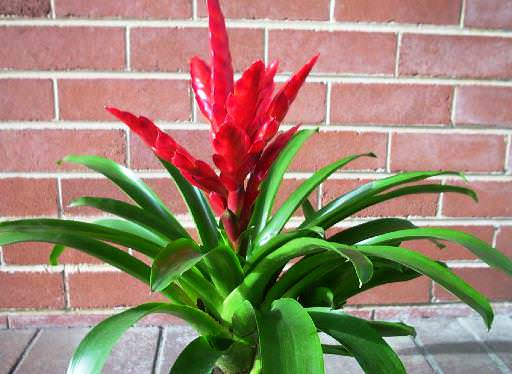

The flower stem, depending on the species or varietal form, can be simple or branched with several inflorescences. The larger the rosette, the longer the peduncle is.
Differences between species and varieties are not only the ornament on the foliage, but also the color of the inflorescences, which can be red, yellow, orange, pink, purple, monochromatic or two-colored.
Flowering lasts for several months, after which the plant slowly dies, which is the normal life cycle of a crop.
Planting and transplanting
Vriezia should not be transplanted often. Since her roots are weak, she does not like transplantation. But there are a number of times when this is necessary. For example, after buying a discounted plant in a store.
It is important to know the rules for performing this procedure. Consider the issues of choosing the right pot, substrate.
These flowers are planted in ceramic and plastic containers. Most flower growers prefer ceramic pots. Their advantages:
- They are better resistant. Plastic containers can turn over when the plant grows a bulky, heavy leaf funnel.
- Flowers in ceramic pots look more decorative.
One of the planting options - a plant planted in a plastic container is installed in a ceramic pots. But then you need to pay attention so that no water remains in the pots after watering.
Another recommendation for choosing a pot is that it should be extended upward. But it may not be high. Its volume is selected in accordance with the size of the root system.
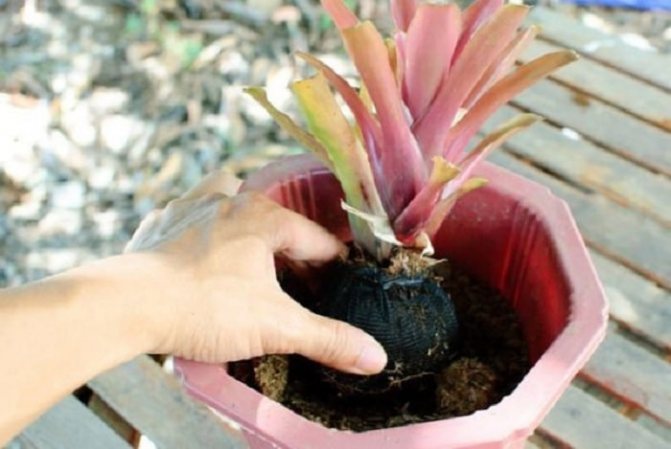

Pot selection
It's important to know. Do not use planting containers without drainage holes.
The second important point is the use of a substrate that meets the requirements:
- slightly acidic medium - pH 6-6.5;
- looseness, water permeability;
- nutritional value.
The easiest way is to use purchased soil designed for planting bromeliads and orchids. The prepared mixture should include:
- light turf and leafy soil;
- high-moor peat;
- sand;
- pine bark.
Its quality is improved by the addition of sphagnum moss and charcoal.
Mature plants need replanting every 3-5 years after flowering. Young bushes are planted until they are about to bloom.
But what about the purchased flower in the store? Most often, the plants there are sold in soil intended for transportation, which is not a good alternative for Vriezia. The correct decision - after passing through adaptation for 2 weeks, the plant is changed the soil, that is, it is transplanted.
It is undesirable to disturb the blooming vriezia - it is better to wait for the end of flowering and the birth of new children. Although in some cases it is necessary to transplant it under such circumstances in order to save it from death.
The optimal time for transplanting is spring or early summer. During this period, she is in a phase of active development.
The work is performed step by step:
- Drainage is placed in a pot with holes on the bottom. It protects the roots from water stagnation. To do this, use a variety of materials: pieces of brick, granulated slag, expanded clay, foam fragments.
- The charcoal added to the drainage (if it was not included in the prepared substrate) protects the plant from disease damage in case of oversaturation of moisture and acidification of the soil.
- Drainage is covered with a layer of soil.
- We know that the roots of Vriezia are weak. Therefore, remove it from the pot carefully. The old soil is shaken off.
- The plant is lowered into a prepared container and sprinkled with a substrate, not forgetting to tap on the edges of the pot to distribute it evenly.
- Pour into a funnel and remove to a warm place with good lighting.
Vriezia transplant
It's important to know. Make sure not to burrow the socket into the ground. Otherwise, it may rot.
Varieties
Under indoor conditions, several varieties of Vriese are grown. Let's tell you more about each of them.
Table: varieties of vriezia
| Variety name | Features of the variety |
| Vriezia brilliant | This species has long, belt-like leaves growing up to 25–40 cm. It blooms from November to May with yellow flowers that wither rather quickly. Orange-red bracts last two months. |
| Vriezia the giant | The upper side of the leaf is dark green with yellow spots, and the bottom of the leaf plate is lilac-red. At home, this type of vriezia does not bloom. |
| Vriezia hieroglyphic | This species is named for its dark green leaves with a V-shaped pattern. It blooms in yellow flowers, bracts are green, but can be yellow or red. |
| Vriezia keeled | In this variety, the rosette is funnel-shaped, the leaves are light green, rather long and narrow. Flowers are yellow-green. |
| Vriezia royal | The leaves of the royal vriezia grow very long - up to 1 m, shiny, gray-green in color. The peduncle reaches 2 m in length, the flowers are white with a yellow tint. |
| Vriezia parrot | Has green leaves. It blooms in yellow flowers with a green corolla, bracts have an orange-red tint. |
| Vriezia perforated | This vriezia is bred because of the leaves speckled with dark stripes and veins. They grow up to 50 cm long and 6 cm wide. The flowers are yellow. |
| Vriezia Astrid | A feature of this species is long flowering - up to 120 days. With good care, 4–5 peduncles can appear at the same time, each up to 100 cm long. Flowers are yellow or red. Leaves are light green. |
| Vriezia Sanders | This vriezia has leathery leaves up to 30 cm long, curved downward. The color of the upper part of the leaves is ash-gray, the lower is motley brown-violet. The peduncle reaches 15 cm, the flowers are yellow-green. |
Often, beginner growers are looking for a variety "Vriezia mix". And they do not find specific information, since the mix is the trade name for a set of plants or their seeds of various colors.
Photo gallery: brilliant frisee, keeled, Era and other popular varieties


At home, the giant Vriezia does not bloom
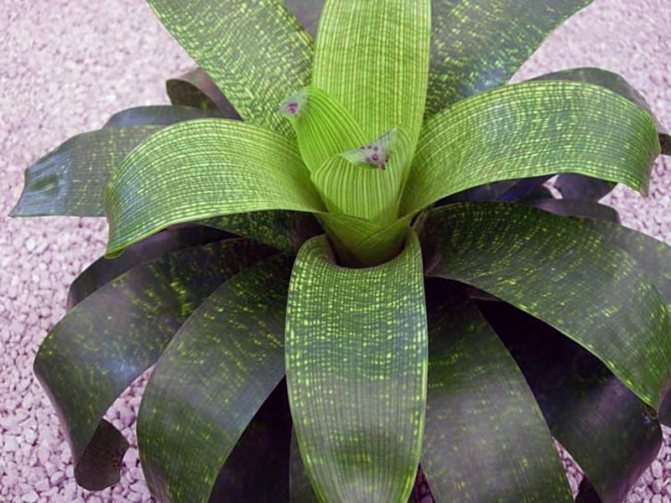

The leaf plate of the perforated vriezia is all speckled with dark stripes and veins
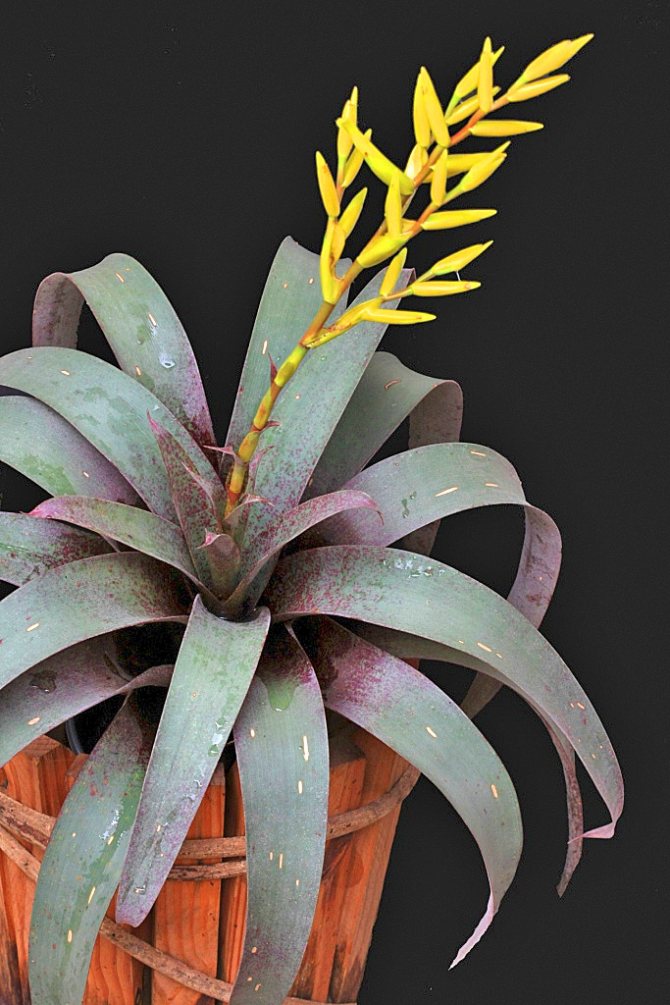

This is how Vriezia Sanders blooms


Vriezia brilliant in the people nicknamed "the flaming sword"


Vriezia Era has yellow-red bracts and stripes on the leaves.


Vriezia hieroglyphic is distinguished by patterned stripes on the leaves
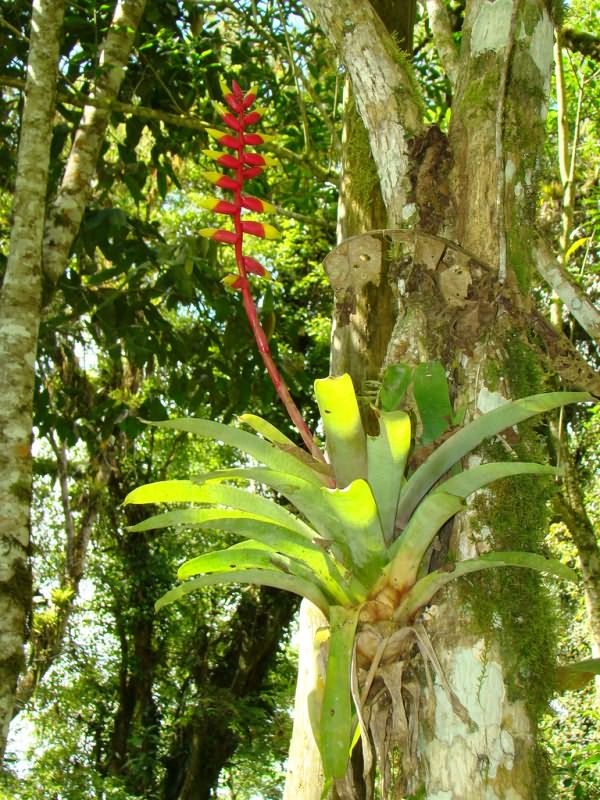

The parrot-shaped vriezia is distinguished by a sparse ear


Royal vriezia is large and ill-suited for the room
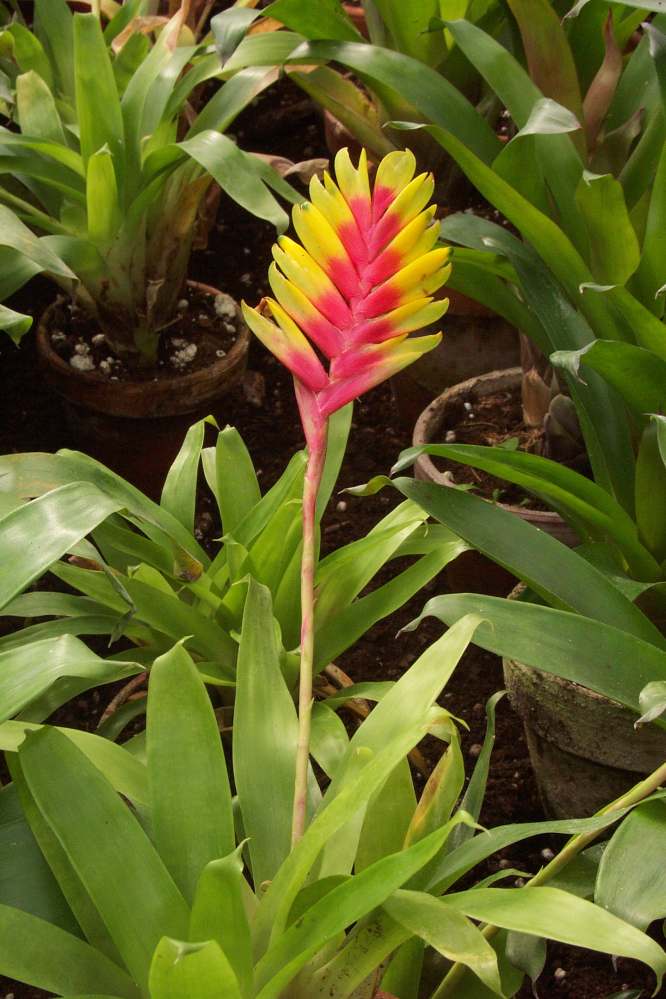

The leaves of the vriezia are keeled, monochromatic

